The Greeter, a terrific essay by @TKMadden from her new memoir



This site is made possible by member support. ❤️
Big thanks to Arcustech for hosting the site and offering amazing tech support.
When you buy through links on kottke.org, I may earn an affiliate commission. Thanks for supporting the site!
kottke.org. home of fine hypertext products since 1998.
Entries for February 2019
What Is a Vegetable? Do They Even Exist?
Last night at dinner, we were talking about our favorite vegetables1 and when my daughter said tomatoes might be her pick, my 11-year-old son, who is at that annoying know-it-all stage of his life and loves to shut down his sister on any minor quibble, said “tomatoes are a fruit”. I argued back that while a tomato might technically be a fruit, it is culturally considered a vegetable and that he was just being a pedantic dick in order to dunk on his sister (but not in those exact words).
This morning, I ran across this piece by Lynne Peskoe-Yang called Vegetables Don’t Exist, in which the author goes quite a bit deeper into what a vegetable is now (and has been in the past).
Botanically speaking, it’s still clear: eggplants, tomatoes, bell peppers, and squash are all fruits. It’s equally clear that mushrooms and truffles are fungi, more closely related to humans than they are to plants. But these are all, also, in common usage, “vegetables.” Yet when an authority like the Oxford English Dictionary should provide clarity on what a vegetable actually is, it instead defines vegetables as a specific set of certain cultivated plant parts, “such as a cabbage, potato, turnip, or bean.” And since carrots and turnips are roots, potatoes are tubers, broccoli is a flower, cabbage is a leaf, and celery is a stem, we find that “vegetable” rarely applies to the entire plant (or to the same parts of the plant), while it also has a way of applying to things that aren’t actually vegetables. It is a category both broader and more specific that the thing it’s supposed to describe.
The piece also references my favorite thing about the English language (which I first learned about in Bill Bryson’s The Mother Tongue) about why the food that results from pigs & cows are called pork & beef:
During Norman and early Plantagenet rule, the farm-to-table divide was less of a foodie buzzword than a class distinction: the upper class were served in French while serfs and servants planted, harvested, raised, butchered, and cooked in Anglo-Saxon. The French word for the served food lived alongside the Germanic word for its source. When Anglo-Saxon chickens were slaughtered, they became poultry for the Normans to eat. Food and animal were class-divided döppelgangers: Anglo-Saxon sheep, cows, swine, and doves were transformed into French mouton (mutton), boeuf (beef), porc (pork), and pigeons (pigeons).
(via @legalnomads)
Update: Apparently there is no such thing as a fish either.
If you choose to describe fish as, say, all the animals descended from the salmon lineage, then you’ve left out lungfish. Oops. If you choose to include both the salmon and the lungfish, you’ll see that one descendant of that original fishy-fish that gave rise to salmon and lungfish likewise gave rise to the cow. Suddenly, you’re stuck with either having the fish include the cows and humans, which no one wants, or no fish at all. Hello, modern evolutionary science; goodbye, fish.
(thx, paul)
The whole thing came up because I remembered how amazing Momofuku’s brussels sprouts are and told the kids its one of my all-time favorite veggie dishes. Other favorites include corn on the cob (from a particular farm in Massachusetts), a perfectly ripe tomato (in caprese salad or on a BLT), asparagus, the snap peas I get from the local farmers’ market in the summer, hen of the woods mushrooms, and beets.↩
Rembrandtness and the Art of Art Authentication
Russell Shorto has a piece in this weekend’s NY Times Magazine about two previously undiscovered Rembrandt paintings, the man who found them both, and the art-world controversy that followed. Here’s one of the newly claimed Rembrandts, bought for $173,000 at auction:

The article is interesting throughout — it’s a neat little bow of a story by the author of the fantastic Island at the Center of the World — but I wanted to highlight this bit on “Rembrandtness” (what a term!) and the fuzziness of authenticating a painting like this:
Six next lined up prominent scholars to support his attribution of the painting to Rembrandt. It’s worth noting that some were unwilling to do so — not because they definitively believed otherwise, but as part of a shift toward acknowledging the gray areas in art history. For such a painting, which seemingly came out of nowhere, there is no way to achieve absolute certainty about its provenance. “When Jan came to me with his painting, I had to admit I couldn’t contest his arguments,” said Gary Schwartz, an American Rembrandt biographer and an authority on 17th-century Dutch art. “And I told him I wouldn’t express doubts about Rembrandt’s authorship. But it doesn’t make me happy” to be so definitive. He went on to elaborate the particular difficulties that Rembrandt poses for authenticators: the variety of styles he painted in, his many pupils, the likelihood that in his studio more than one person worked on a given painting. A painting that is determined to be, say, by “the studio of Rembrandt,” rather than by Rembrandt himself, would be of lesser value. Schwartz is one of a number of art historians who, when it comes to questions of the authenticity of works by famous painters, would like people to focus less on the artist and the monetary worth of the painting than on the work itself. He uses the term “Rembrandtness” and argues for assigning shades of likelihood that a painting is by the artist himself. Regarding the Rembrandtness of this particular portrait, he said, “The attribution to Rembrandt is the hypothesis to beat, but it may not be unbeatable.”
Museums try to respect “Rembrandtness.” The National Gallery of Art in London, for instance, labels “An Old Man in an Armchair” as “probably by Rembrandt,” and the Mauritshuis museum recently announced that it is mounting an exhaustive study of two of its supposed Rembrandts to try to determine the likelihood of their being by the master. “I think ‘Rembrandtness’ is a smart idea,” said Ronni Baer, senior curator of European paintings at the Museum of Fine Arts in Boston. “But people aren’t going to be content with it because there’s so much money involved in attribution.”
I wonder what the true Rembrandtness is of all the paintings in museums or expensive collections that are currently attributed to only his hand? Or the da Vinciness of Salvator Mundi?
Speaking of Rembrandt, the Rijksmuseum in Amsterdam is currently displaying all of their extensive collection of works by the artist in an exhibition called All the Rembrandts.1
In addition, the most important painting in the collection, Night Watch, will be restored in place over the next several years so that museum visitors can observe the process.
To paraphrase the classic Onion article about razors: “Fuck everything, we’re doing all the Rembrandts!”↩
Our World Is Built for Men
In her new book, Invisible Women: Data Bias in a World Designed for Men, Caroline Criado Perez argues that the data that scientists, economists, public policy makers, and healthcare providers rely on is skewed, unfairly and dangerously, towards men.
…because so much data fails to take into account gender, because it treats men as the default and women as atypical, bias and discrimination are baked into our systems. And women pay tremendous costs for this bias, in time, money, and often with their lives.
The Guardian has a lengthy excerpt of the book, including a discussion of crash test dummies:
Crash-test dummies were first introduced in the 1950s, and for decades they were based around the 50th-percentile male. The most commonly used dummy is 1.77m tall and weighs 76kg (significantly taller and heavier than an average woman); the dummy also has male muscle-mass proportions and a male spinal column. In the early 1980s, researchers based at Michigan University argued for the inclusion of a 50th-percentile female in regulatory tests, but this advice was ignored by manufacturers and regulators. It wasn’t until 2011 that the US started using a female crash-test dummy — although, as we’ll see, just how “female” these dummies are is questionable.
Designing cars around the typical male body type means women are more likely to be injured or killed:
Men are more likely than women to be involved in a car crash, which means they dominate the numbers of those seriously injured in them. But when a woman is involved in a car crash, she is 47% more likely to be seriously injured, and 71% more likely to be moderately injured, even when researchers control for factors such as height, weight, seatbelt usage, and crash intensity. She is also 17% more likely to die. And it’s all to do with how the car is designed — and for whom.
Another example Criado Perez cites involves women’s healthcare:
When Viagra — sildenafil citrate — was tested initially as heart medication, its well-known properties for men were discovered. “Hallelujah,” said Big Pharma, and research ceased. However, in subsequent tests the same drug was found to offer total relief for serious period pain over four hours. This didn’t impress the male review panel, who refused further funding, remarking that cramps were not a public health priority.
Freddie Mercury’s Vocal Doppelganger
Whatever your opinion of the Freddie Mercury biopic Bohemian Rhapsody,1 you gotta admit the music was pretty great. After all, Mercury and Queen were pretty great. But some of the credit also goes to Marc Martel, who sounds remarkably like Mercury and did some of the vocals for the film.
Rami Malek embodies Mercury onscreen, but as he told The New York Times last year, “No one wants to hear me sing.” During the performance sequences in “Bohemian Rhapsody,” the movie sometimes employs Mercury’s actual vocals from the Queen archives, but that wasn’t always practical — some scenes demanded a stunt vocal-cord performer.
The film’s creators have conceded that the sung vocals in the movie are largely by Mercury and Martel, although they haven’t broken down the specifics of who contributed what; doing so might distract from Malek’s performance.
Here’s Martel singing We Are The Champions:
He even looks a little bit like Mercury, don’t you think? Perhaps more impressively, here’s Martel doing Bohemian Rhapsody:
Vocal coach Carl Franz was impressed.
Martel is currently touring with a Queen cover band and released an album of Queen covers last year.
Bonus: Polyphonic explains why Mercury was such an incredible singer:
(via open culture)
My 2 cents is that Rami Malik deserved the hell out of that Oscar and BH was really fun to see in the midst of a sea of Queen fans on opening night. But a Best Picture nominee it was not.↩
A Camera Lens Made from an Iceberg
Mathieu Stern had an idea. He thought that if you could sculpt a piece of ultra-clear ice into the correct shape, it would function as a camera lens. To find that quality of ice, he traveled to Iceland to scavenge a chunk of an iceberg washed ashore on a black sandy beach. After some trial and error, he succeeded in making his iceberg lens and using it to shoot some photos and video. The lens lasted for about a minute before melting.
Here are some of the photos he took:
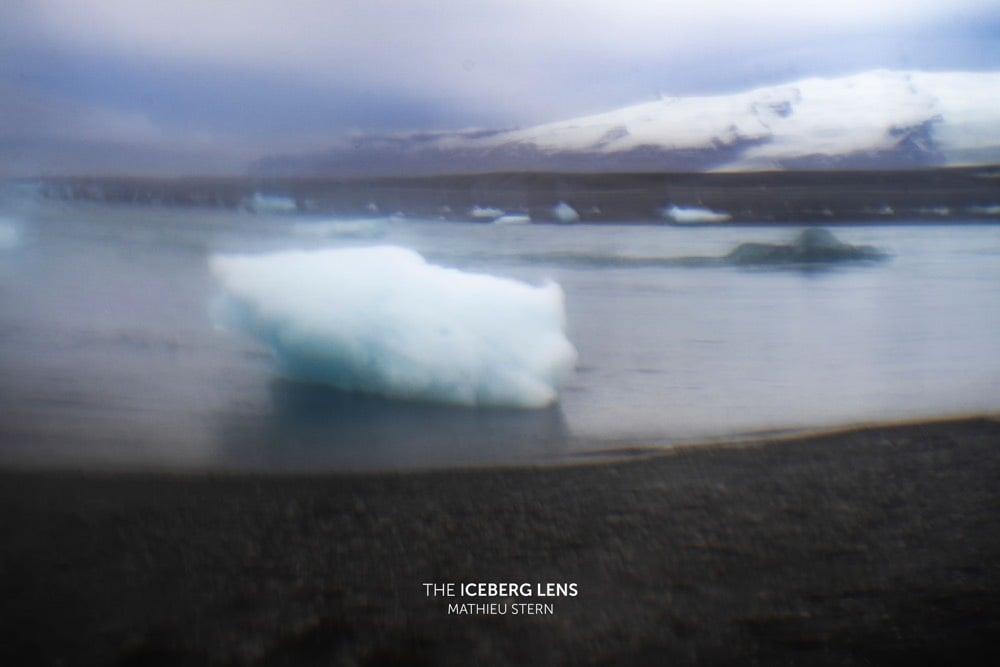
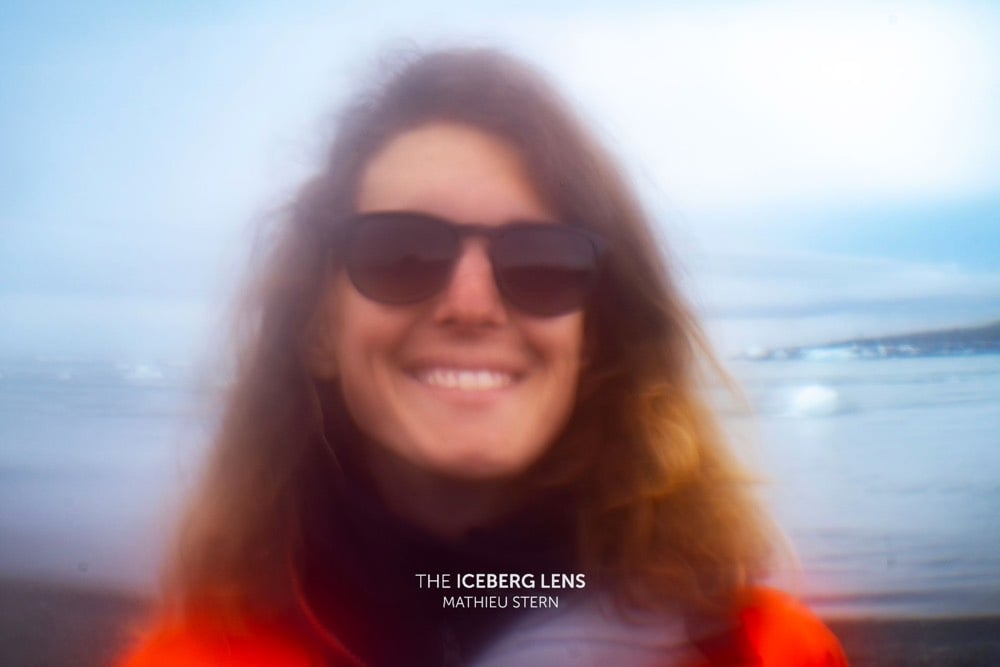
It’s a little impractical to go all the way to Iceland for iceberg ice when you can make your own clear ice at home, but Stern had this to say:
Now if people asks me “Are you happy with the result? it’s a bunch of blurry photos!?”, my response would be: “this project is a scientific, artistic and poetic project, I never imagined the result would look like the photos that comes from an ultra modern lens, but I was amazed by the strange beauty of the images I made with the first ever 10 000 year old lens.”
This is not a project for everyday photography, it was an adventure and a bet that when you have a crazy hypothesis, you should do everything to experiment it in the field.
I also wondered whether iceberg ice was actually more clear or pure than ice you could make at home. I didn’t find anything definitive but I did read this piece by Michelle Iwen about drinking single-malt scotch cooled by iceberg ice.
Our expedition leader, an Irish biologist studying southern birds, fished small chunks of clear-bubbled ice directly from the water as he worked to dislodge a sharp edged growler from beneath the propeller. He encouraged us to taste the ice, licking off the overlying salt water to find the pure, flavorless cold underneath.
“If you hold it in your bare hand long enough to speed the melting, you’ll hear it fizzle,” he told us. The fizzy pop of bergy seltzer is a familiar, yet unexpected sound. It sounds like a freshly opened can of soda, as the bubbles newly freed from the ice travel up toward the surface of the water. Yet the mundane sound of bergy seltzer belies the sinister power of melt against the bottom of the iceberg. Each bubble released scores the surface of the ice, compromising its structural integrity. We held the ice shards in our hands to make it fizz, let our skin burn against the freeze, as our expedition guide hoisted the free-floating remnants of a tiny growler into the zodiac to be chipped apart and consumed in cocktails that evening.
(via @peteashton)
I like how the production designer of The Favourite didn’t fuss about being too period-specific. “Queen Anne spends much of The Favourite in a wheelchair, but the wheelchair wasn’t invented until 1783.”
How the KGB Weaponized Fake News (and How It’s Still Hurting Us Today)
The US government created HIV. The CIA killed Kennedy. The KGB deliberately spread disinformation designed to hurt the US and its allies for decades. In this excellent three-part video series from the NY Times, they show how this KBG program worked and how, under Vladimir Putin, it continues to affect world politics.
The first installment is an introduction to how the KGB wielded disinformation as well as a profile of one of their most successful operations: convincing the world that the US government created the AIDS epidemic. It took almost 4 years, but an article planted by the KGB in an Indian newspaper was eventually reported by Dan Rather on the CBS evening news, embraced by anti-AIDS activists, and believed by many foreign governments.
In the words of a KGB agent that defected to the US, the goal of Soviet disinformation was “to change the perception of reality of every American to such an extent that despite the abundance of information, no one is able to come to sensible conclusions in the interests of defending themselves, their families, their community, and their country.” It was a denial of service attack on the truth.
Fast forward through the end of the Cold War and to the rise of former KGB agent Vladimir Putin. Now Russia is creating fake news stories like Pizzagate which now form the basis of US domestic and foreign policy because our President watches Fox News every morning. In the second segment, the Seven Commandments of Fake News are introduced:
The commandments are:
1. Find the cracks in the fabric of society, the social, demographic, economic, and ethnic divisions.
2. Create a big lie, something that would be very damaging if you could get people to believe it.
3. Wrap the lie in a kernel of truth.
4. Conceal your hand, make it seem like the story came from somewhere else.
5. Find yourself a useful idiot.
6. Deny everything, even if the truth is obvious.
7. Play the long game.
In the third video, they look at what can be done to combat Russia and other players in this war of disinformation, and how ineffective the response has been on the part of the US government (including the Obama administration) and social media companies:
There are certainly no shortage of useful idiots for Putin to exploit. Fox News and Trump top the list along with the alt-right media charlatans, but YouTube’s algorithms, Facebook’s business model, and the everyday American citizens like you and me are also to blame. Add into the mix that Trump is also waging his own disinformation campaign against the American public, and there’s a lot to ponder and despair.
See also Putin’s Playbook for Discrediting America and Destabilizing the West.
How Marie Kondo Helped Me Sort Out My Gender. “It felt silly, sure, that this book is what had finally done it, but I also couldn’t unsee my actual preferences: so much of the feminine clothing I owned did not spark joy.”
What’s the Weather Like on Mars Right Now?
Now that the InSight lander is up and running on Mars, NASA is using the probe’s weather instrumentation to provide a daily weather report from the red planet.

The report is delayed by a day or so (communications delay? non-essential data delay?), but it’s still really cool to see what the temperature, wind speed, and barometric pressure is at Elysium Planitia.
I’d just like to note for the record that at some point on Monday, it was actually warmer on Mars than it is right now in Vermont. ♫ Gotta get up, gotta get out, gotta get out into the Martian sun… ♫
Part of the current popularity of the 4-panel comic is that squares are very shareable on social media. “People don’t go to websites anymore.”
A Mega-Trailer for the Whole 10-Film Star Wars Franchise
In 2012, actor and budding film editor Topher Grace took all three Star Wars prequels and condensed them into an 85-minute movie called Star Wars: Episode III.5: The Editor Strikes Back.
Earlier today, Grace and trailer editor Jeff Yorkes uploaded a trailer they created for all 10 movies in the Star Wars franchise: the originals, the prequels, the two new ones, and the Star Wars Stories (Solo and Rogue One). As a trailer, it leaves a lot out, but the pair still make a few connections explicit that the casual fan may have overlooked in the midst of all the light saber & fighter duels.
Movie Color Palettes
A site called The Colors of Motion makes single image timelines of the use of colors in movies. They sample frames at regular intervals, choose the average color of each frame, and stack them up. Here’s their representation of Blade Runner 2049:

If you click through on specific films, you can see the actual screencaps used for sampling and buy prints.
The Moviebarcode Tumblr pre-dates The Colors of Motion, although they appear to use a slightly different technique: each scene is smooshed into a single vertical line. Here’s Mad Max: Fury Road:
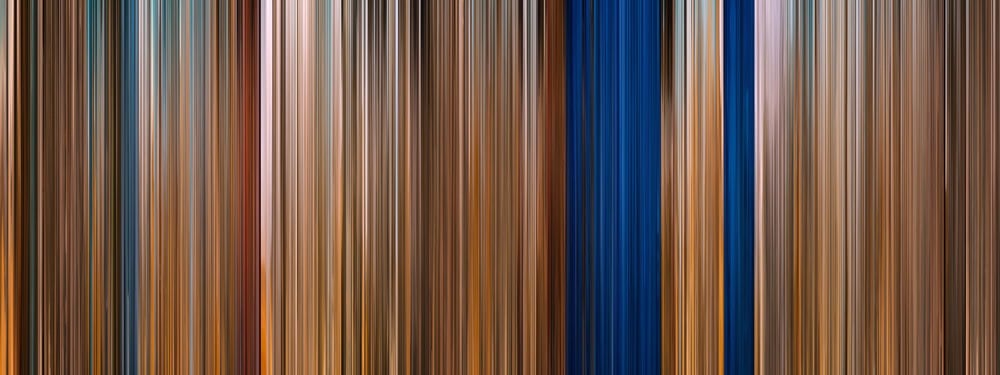
Prints are available from Moviebarcode as well.
See also Brendan Dawes’ Cinema Redux and Wes Anderson Palettes.
Work Wife, a book by @ericacerulo and @clairemazur about “the unique power of female friendship to fuel successful businesses”. Featuring @aminatou, @amandahesser, and others.
Wind Speeds Hit 171 MPH Atop Mount Washington Yesterday
As you can see on the US wind map, it’s been blustery in New England for the past couple of days. Yesterday the observatory atop Mount Washington in New Hampshire recorded a wind gust of 171 mph, the fastest gust ever recorded there in the month of February. This is what yesterday’s “Hays Chart” looked like:
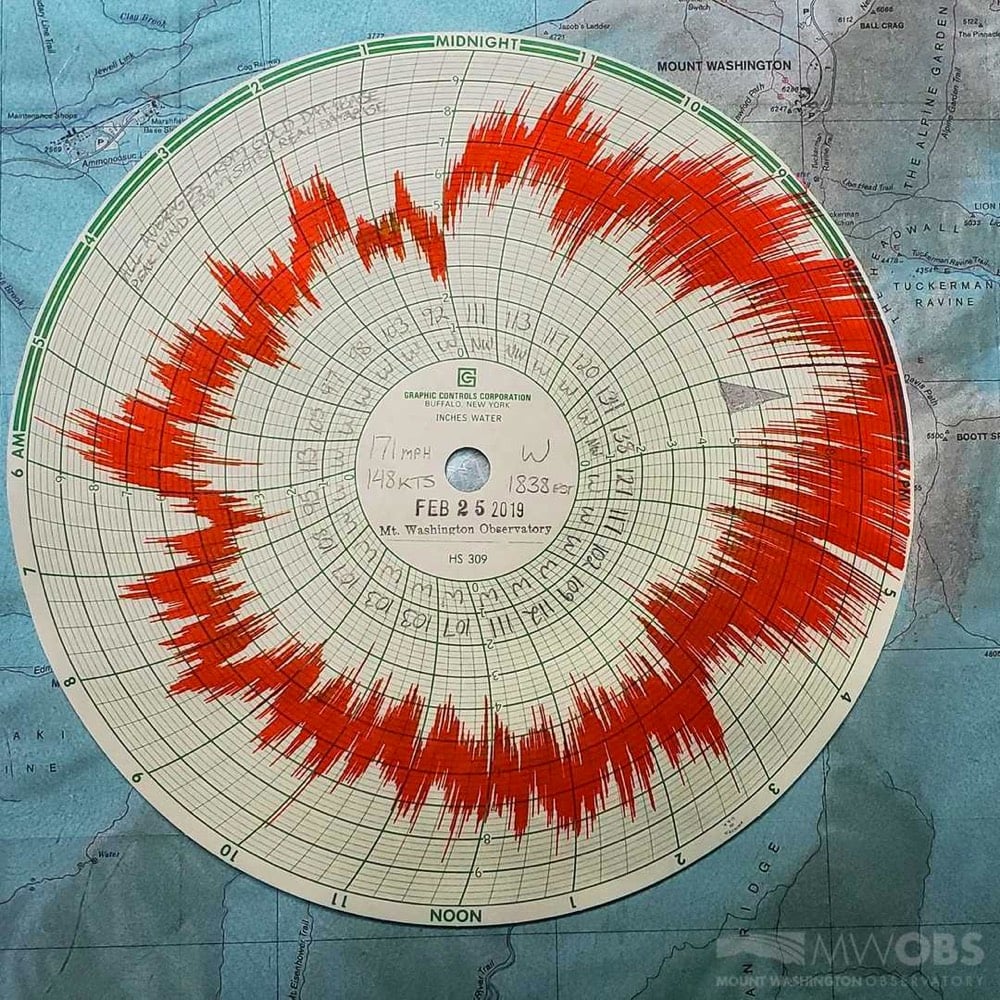
While it’s more that 50 mph slower than the 1934 record of 231 mph (!!), a look at the historical record shows that it’s one of the strongest winds ever recorded there and the strongest one since 1985.
While the observatory building itself is rated for winds up to 300 mph, humans venturing out at that speed might blow away. Here’s what a person battling 70-100 mph winds looks like:
On Instagram, someone at the observatory said of last night’s winds:
We could absolutely hear the winds yesterday! Sounded like a constant rumble similar to an earthquake. At the height of the storm our coffee mugs were shaking across the table and our bullet proof windows were constantly flexing back and forth.
(thx, meg)
The Celebrity Name Spelling Test
Last month, I wrote about Colin Morris’ flow diagrams that show how people most frequently misspell difficult words. The crew over at The Pudding turned this into an interactive feature where you can test your spelling of the names of celebrities like football player & activist Colin K., actor & comedian Zach G., and musician Alanis M. As you type, you get a flow diagram of your letter choices compared to everyone else’s. Here’s my diagram for Zach G., which only 15% of people got correct (with the correct spelling blocked out):
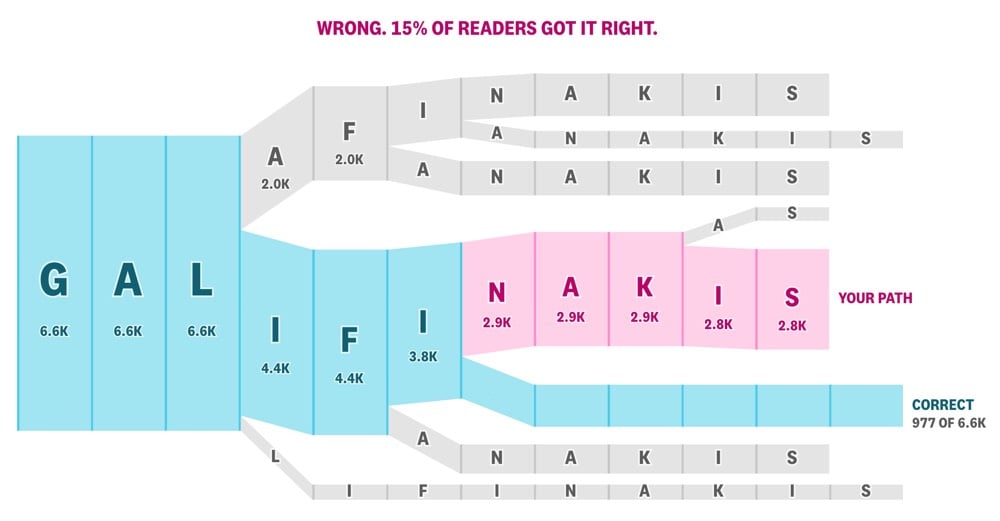
I only got 8 right…how did you do?
Flat-Earther Proves in Simple Experiment that the Earth Is Round
Behind the Curve, now available on Netflix, is a 2018 documentary about the global community of people who believe that the Earth is flat. In this scene at the end of the film (um, spoilers?), a Flat-Earther named Jeran Campanella devises a simple experiment that he claims will prove that the Earth is flat…but very quickly proves the opposite:
Campanella’s reaction: “Interesting. Interesting. That’s interesting.” This is one of two straightforward experiments shown in the film that are devised by Flat-Earthers to prove the planet’s flatness that end up affirming that the Earth is indeed round (or, more accurately, an oblate spheroid).
One of the more jaw-dropping segments of the documentary comes when Bob Knodel, one of the hosts on a popular Flat Earth YouTube channel, walks viewers through an experiment involving a laser gyroscope. As the Earth rotates, the gyroscope appears to lean off-axis, staying in its original position as the Earth’s curvature changes in relation. “What we found is, is when we turned on that gyroscope we found that we were picking up a drift. A 15 degree per hour drift,” Knodel says, acknowledging that the gyroscope’s behavior confirmed to exactly what you’d expect from a gyroscope on a rotating globe.
“Now, obviously we were taken aback by that. ‘Wow, that’s kind of a problem,’” Knodel says. “We obviously were not willing to accept that, and so we started looking for ways to disprove it was actually registering the motion of the Earth.”
Knodel & Campanella are the co-hosts of a YouTube channel called Globebusters (I’m not going to link to it…YouTube’s conspiracy-minded algorithms don’t need any help) where they claim to debunk the Earth’s curvature and heliocentrism as well as discussing how NASA fakes space activities. Their failed experiments don’t seem to have diminished their Flat Earth zeal. One of their recent videos, nearly 4 hours long, is an attempt to “[debunk] the bogus claim that Globebusters proved a 15 degree per hour rotation of the Earth” and another, also almost 4 hours long, is a rebuttal to the “misrepresentation” of their views and experiments in Behind the Curve.
Where the $&%@# Did Grawlixes Come From?
A grawlix is a string of typographic characters that represent obscene language, often found in comics. In this video Phil Edwards traces the history of the grawlix back to the early 20th century, right around when the comic form was invented.
Known as the “grawlix” — a term invented by Beetle Bailey cartoonist Mort Walker — this string of symbols is almost as old as comics, extending back to the early 1900s. Comics like The Katzenjammer Kids and Lady Bountiful were truly inventing the art form and, in the process, had to figure out a way to show obscenities to kids. Enter #*@!$ like this. The grawlix performs a censorship function while, at the same time, revealing that something naughty is going on.
How New Orleans Reduced Its Homeless Population By 90 Percent. They housed people first and then addressed their challenges.
A new simulation suggests that the Earth could warm by an *additional* 8 degrees C (12° total) due to cloud loss in the next century. “Think of crocodiles swimming in the Arctic and of scorched, mostly lifeless equatorial regions…”
Earth’s Atmosphere Stretches Out Past the Moon

A recent analysis of data collected by the ESA/NASA Solar and Heliospheric Observatory shows that the Earth’s atmosphere is a lot larger than previously known.
A recent discovery based on observations by the ESA/NASA Solar and Heliospheric Observatory, SOHO, shows that the gaseous layer that wraps around Earth reaches up to 630 000 km away, or 50 times the diameter of our planet.
“The Moon flies through Earth’s atmosphere,” says Igor Baliukin of Russia’s Space Research Institute, lead author of the paper presenting the results.
“We were not aware of it until we dusted off observations made over two decades ago by the SOHO spacecraft.”
As you might imagine, the atmosphere gets preeeeetty thin farther from the surface of the Earth — at the Moon’s distance, the density of hydrogen atoms is 0.2 atoms per cubic centimeter.
Cheap TVs and Exorbitant Education, Modern America in One Chart
Economist Mark Perry has updated for 2018 his chart of price changes of selected goods over the past two decades.

This graphic has been referred to a “the Chart of the Century” because it explains a lot about the socioeconomic life in the United States in just a quick glance.
During the most recent 21-year period from January 1998 to December 2018, the CPI for All Items increased by exactly 56.0% and the chart displays the relative price increases over that time period for 14 selected consumer goods and services, and for average hourly earnings (wages). Seven of those goods and services have increased more than average inflation, led by hospital services (+211%), college tuition (+183.8%), and college textbooks (+183.6%). Average wages have also increased more than average inflation since January 1998, by 80.2%, indicating an increase in real wages over the last several decades.
The other seven price series have declined since January 1998, led by TVs (-97%), toys (-74%), software (-68%) and cell phone service (-53%). The CPI series for new cars, household furnishings (furniture, appliances, window coverings, lamps, dishes, etc.) and clothing have remained relatively flat for the last 21 years while average prices have increased by 56% and wages increased 80.2%.
As various parties have noted, the goods & services that have gotten more expensive tend to be things that people need, aren’t subject to international competition, and are subject to more government regulation. The goods & services that have gotten cheaper tend to be things that people want, are subject to international competition, and are less regulated.
If healthcare & education costs had dropped as much in the last two decades as the price of TVs, toys, and software has, we’d be all set! As it is…
The Life-Changing Magic of the $15 Minimum Wage
For the NY Times, Matthew Desmond writes about how raising the minimum wage makes a huge difference in people’s lives.
A $15 minimum wage is an antidepressant. It is a sleep aid. A diet. A stress reliever. It is a contraceptive, preventing teenage pregnancy. It prevents premature death. It shields children from neglect. But why? Poverty can be unrelenting, shame-inducing and exhausting. When people live so close to the bone, a small setback can quickly spiral into a major trauma. Being a few days behind on the rent can trigger a hefty late fee, which can lead to an eviction and homelessness. An unpaid traffic ticket can lead to a suspended license, which can cause people to lose their only means of transportation to work. In the same way, modest wage increases have a profound impact on people’s well-being and happiness. Poverty will never be ameliorated on the cheap. But this truth should not prevent us from acknowledging how powerfully workers respond to relatively small income boosts.
Another observation in the article reminded me of a passage from Matthew Walker’s piece in The Guardian asserting that sleep is an amazing and underutilized performance-enhancing drug:
Studies have linked higher minimum wages to decreases in low birth-weight babies, lower rates of teen alcohol consumption and declines in teen births. A 2016 study published in the American Journal of Public Health found that between roughly 2,800 and 5,500 premature deaths that occurred in New York City from 2008 to 2012 could have been prevented if the city’s minimum wage had been $15 an hour during that time, instead of a little over $7 an hour. That number represents up to one in 12 of all people who died prematurely in those five years. The chronic stress that accompanies poverty can be seen at the cellular level. It has been linked to a wide array of adverse conditions, from maternal health problems to tumor growth. Higher wages bring much-needed relief to poor workers. The lead author of the 2016 study, Tsu-Yu Tsao, a research director at the New York City Department of Health and Mental Hygiene, was “very surprised by the magnitude of the findings.” He is unaware of any drug on the market that comes close to having this big of an effect.
Desmond is the author of the award-winning Evicted: Poverty and Profit in the American City.
Your Favorite Makeup Tip Was Probably Invented By A Drag Queen
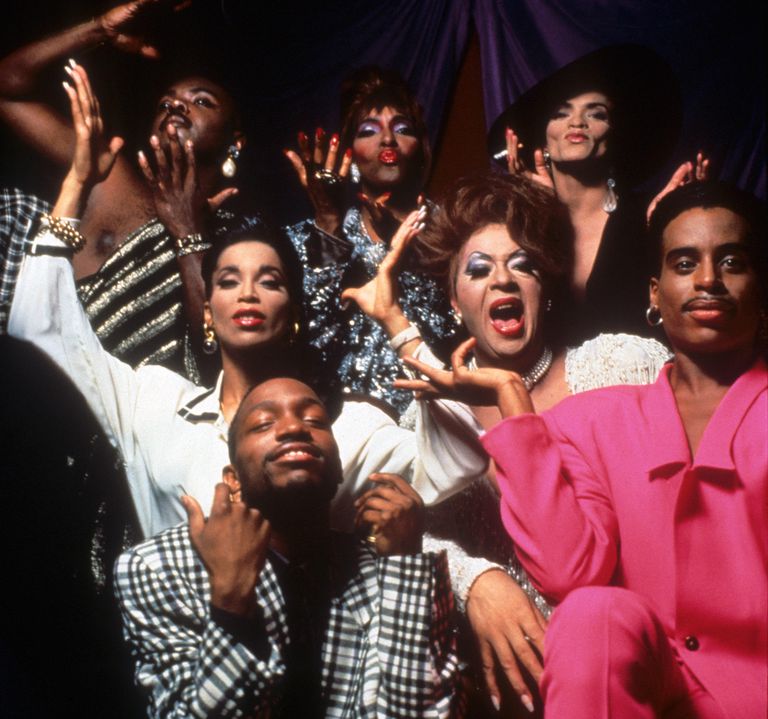
I missed this essay when it came out in December, but I’m reading it now, after Lauren M. Jackson (congratulations on the Northwestern job! OMG!) turned me onto it. It’s by Kristina Rodulfo, and called “Everything We Know About Beauty We Learned From Drag Queens.”
Before YouTube, before Instagram, before “influencers,” now-common knowledge makeup techniques like contouring and baking were used by drag queens in the dressing rooms of clubs. They were passed on by word of mouth, taught by either peers or older performers (called drag mothers) who’d take newcomers under their wings. The objective was to use makeup to transform the face into a character. Borrowing from theater tradition, makeup was about exaggerating features so the performer wouldn’t be washed out under powerful stage lights, and their expression could be seen by someone sitting in the back of the room.
Like creating costumes, dancing, and lip syncing, knowing how to do makeup was just one of the many technical skills it took to be a successful drag queen. But, makeup is more than just a means to an end. It’s a tool of transformation, and for many queens, liberation.
Now that (among other things) the digital makeup tutorial has become a thing, there are naturally some questions about the appropriation of these techniques, whether the inventors are receiving proper credit, or how and whether they’re being erased from the story.
Where do you think contouring, baking, and highlighting came from? Many have linked the “trend” to Kim Kardashian, who in 2012 posted a viral photo of her face mid-contouring (the trick became such a signature of hers that she launched KKW Beauty in 2017 with a contouring kit). Her trademark look inspired thousands of Kardashian-inspired tutorials and a chain reaction started among top beauty bloggers competing for views and likes….
Yet, the acknowledgement isn’t fully there. “Do I feel the drag community has been given the credit it deserves for highlight, contour[ing], cut creases? No I don’t,” says Osmond Vacious a.k.a. Vivacious, a New York-based drag queen since the ’90s club kid era mentored by the likes of Hector Xtravaganza (grandfather of the House of Xtravaganza). “Why do I say that? When was the last time you saw a drag queen in a commercial for L’Oreal, CoverGirl, anyone? We’re not there.”
“It’s not that the world isn’t ready for it,” Vacious continues, “Those companies aren’t ready to embrace change because they’re more worried that their core audiences might run away from it. But, guess what? There is another world out there that likes all that ‘extra.’ Embrace us and work with us. And we’ll work with you.”
With the mainstream success of shows like RuPaul’s Drag Race, and as queens become actors and celebrities in their own right, it’s increasingly likely that more drag queens will become spokespeople and come more out front.
In the meantime, though, just embrace it. Find out a little bit more about where all this culture you love came from. Learn it. Love it. Learn from it. It can change your life.
And watch Sasha Velour and Shea Coulée lip sync to Whitney Houston. It’s really something special.
What was it really like for jazz musicians and other black artists on the road during Jim Crow? The real story of The Green Book debunks the movie “Green Book”:
The Best Thing Ever Written About Politics and Art
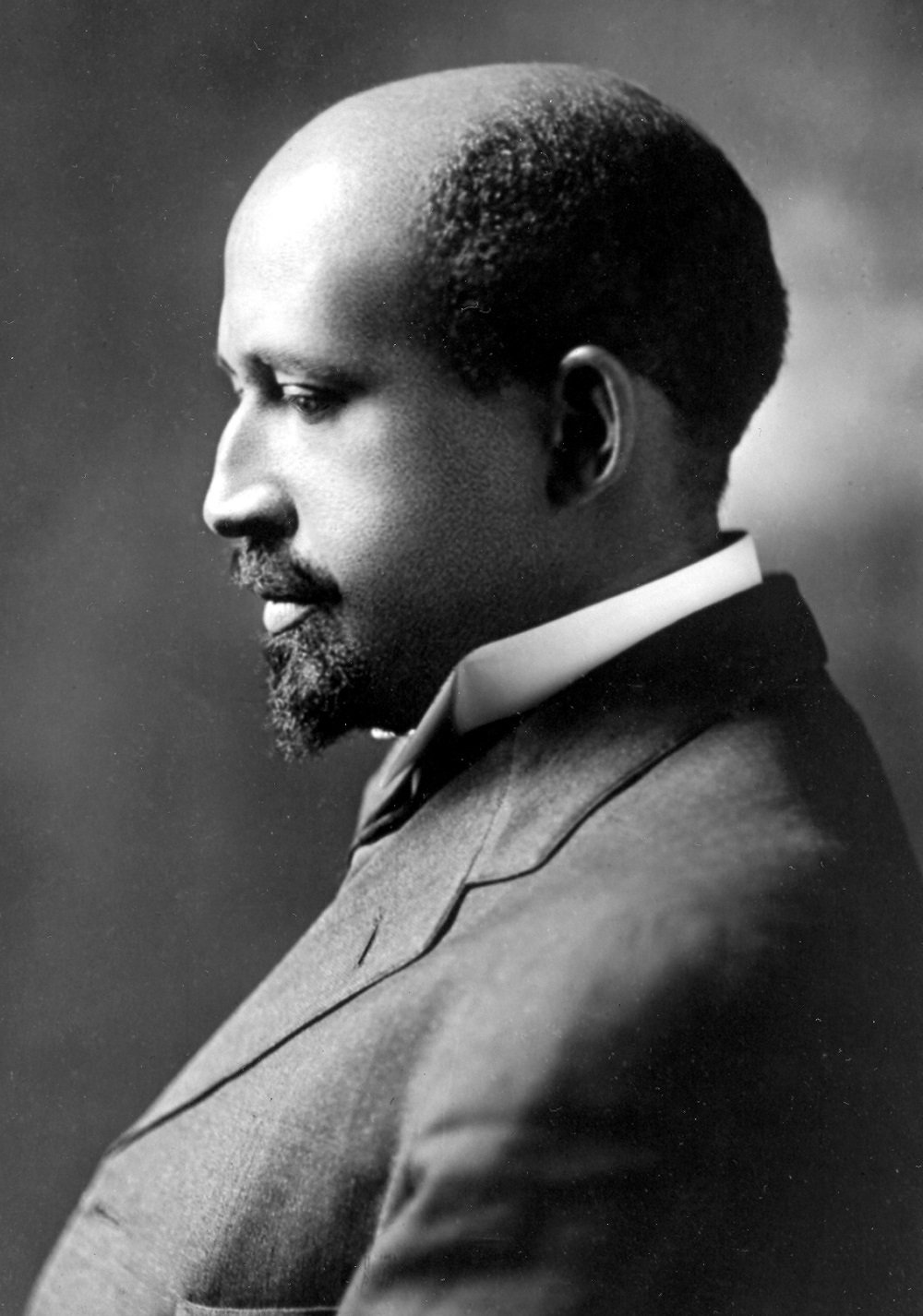
Tomorrow, February 23, is William Edward Burghardt Du Bois’s birthday. Du Bois was born in 1868 and died in 1963. In fact, Du Bois died, in Ghana, the day before the March on Washington for Jobs and Freedom. Roy Wilkins and hundreds of thousands of marchers observed Du Bois’s death with a moment of silence.
Du Bois is one of the most influential and important thinkers in American history. He wrote many, many speeches, essays, and books that are essential to understanding American culture, society, labor, and politics, particularly as they affected and were affected in turn by black people.
My favorite Du Bois essay, and one of the first I ever read, was and probably still is “Criteria of Negro Art.” It was written and published in 1926, and first presented as a speech in honor of Carter Woodson. I have in the last few years met otherwise extremely well-read people who knew nothing of this essay and have since sworn an oath to remedy that wherever possible. So you get to read some excerpts from it now.
The Big Idea of the essay is really formulated in the fourth paragraph:
What do we want? What is the thing we are after? As it was phrased last night it had a certain truth: We want to be Americans, full-fledged Americans, with all the rights of other American citizens. But is that all? Do we want simply to be Americans? Once in a while through all of us there flashes some clairvoyance, some clear idea, of what America really is. We who are dark can see America in a way that white Americans cannot. And seeing our country thus, are we satisfied with its present goals and ideals?
The answer to this first question “What do we want?” is Art, the proper appreciation of Beauty and Freedom; and the answer to the last question, “are we satisfied with [America’s] present goals and ideals?” is, of course, No.
In the twelfth paragraph, Du Bois argues that the lives of black Americans, not just the emerging intellectual bourgeoisie of the 1920s, but the lives of all black Americans, for their entire history, are the proper subject of this new kind of Art:
This is brought to us peculiarly when as artists we face our own past as a people. There has come to us — and it has come especially through the man we are going to honor tonight — a realization of that past, of which for long years we have been ashamed, for which we have apologized. We thought nothing could come out of that past which we wanted to remember; which we wanted to hand down to our children. Suddenly, this same past is taking on form, color, and reality, and in a half shamefaced way we are beginning to be proud of it. We are remembering that the romance of the world did not die and lie forgotten in the Middle Age [sic]; that if you want romance to deal with you must have it here and now and in your own hands.
Du Bois, after all, was a sociologist, and knew how to mobilize facts and figures; he does so in this anecdote, about black soldiers who fought in the Great War:
Have you heard the story of the conquest of German East Africa? Listen to the untold tale: There were 40,000 black men and 4,000 white men who talked German. There were 20,000 black men and 12,000 white men who talked English. There were 10,000 black men and 400 white men who talked French. In Africa then where the Mountains of the Moon raised their white and snow-capped heads into the mouth of the tropic sun, where Nile and Congo rise and the Great Lakes swim, these men fought; they struggled on mountain, hill and valley, in river, lake and swamp, until in masses they sickened, crawled and died; until the 4,000 white Germans had become mostly bleached bones; until nearly all the 12,000 white Englishmen had returned to South Africa, and the 400 Frenchmen to Belgium and Heaven; all except a mere handful of the white men died; but thousands of black men from East, West and South Africa, from Nigeria and the Valley of the Nile, and from the West Indies still struggled, fought and died. For four years they fought and won and lost German East Africa; and all you hear about it is that England and Belgium conquered German Africa for the allies!
In the 18th paragraph, he demolishes the premise that the success of black artists in and of itself is evidence of racial progress as such:
With the growing recognition of Negro artists in spite of the severe handicaps, one comforting thing is occurring to both white and black. They are whispering, “Here is a way out. Here is the real solution of the color problem. The recognition accorded Cullen, Hughes, Fauset, White and others shows there is no real color line. Keep quiet! Don’t complain! Work! All will be well!”
And beginning in the 21st paragraph, he quickly, and with startling beauty, poses the real problem for black artists working in America:
There is in New York tonight a black woman molding clay by herself in a little bare room, because there is not a single school of sculpture in New York where she is welcome. Surely there are doors she might burst through, but when God makes a sculptor He does not always make the pushing sort of person who beats his way through doors thrust in his face. This girl is working her hands off to get out of this country so that she can get some sort of training.
There was Richard Brown. If he had been white he would have been alive today instead of dead of neglect. Many helped him when he asked but he was not the kind of boy that always asks. He was simply one who made colors sing.
There is a colored woman in Chicago who is a great musician. She thought she would like to study at Fontainebleau this summer where Walter Damrosch and a score of leaders of Art have an American school of music. But the application blank of this school says: “I am a white American and I apply for admission to the school.”
We can go on the stage; we can be just as funny as white Americans wish us to be; we can play all the sordid parts that America likes to assign to Negroes; but for any thing else there is still small place for us.
I first read this essay at least twenty years ago, but I swear I’ve thought about “when God makes a sculptor He does not always make the pushing sort of person who beats his way through doors thrust in his face” every day since. Every day. I think about it for black artists, for gay, lesbian, transgender, and queer artists, for women who put up with harassment and abuse from the very people who’ve promised to help them pursue their art. And I think about it even more when I think about the thousands if not millions of people who were turned away from ever becoming artists, writers, musicians, actors, sculptors, dancers, engineers, designers, programmers, or any other critical or creative field where doors are so often thrust in your face.
Yes, push through those doors. But hold them open after you. Because the next person, God may not have made to be one whose first inclination is to push.
All art, Du Bois argues, and in particular the art of black people, relies on not just Beauty, but Truth and Goodness, “goodness in all its aspects of justice, honor and right — not for sake of an ethical sanction but as the one true method of gaining sympathy and human interest.” Art that seeks to restore the balance of truth and goodness, on a subject like the lives of black people, which is prone to so much distortion and misunderstanding, necessarily relies on an ideal of Justice. This leads to maybe the most famous quote of the essay:
Thus all Art is propaganda and ever must be, despite the wailing of the purists. I stand in utter shamelessness and say that whatever art I have for writing has been used always for propaganda for gaining the right of black folk to love and enjoy. I do not care a damn for any art that is not used for propaganda. But I do care when propaganda is confined to one side while the other is stripped and silent.
What America is getting from its white artists, is propaganda that shames and distorts the lives of black people, in order to show them to be sinister and/or servile.
In other words, the white public today demands from its artists, literary and pictorial, racial pre-judgment which deliberately distorts Truth and Justice, as far as colored races are concerned, and it will pay for no other.
But respectability politics is almost as dangerous, when it comes to art.
On the other hand, the young and slowly growing black public still wants its prophets almost equally unfree. We are bound by all sorts of customs that have come down as second-hand soul clothes of white patrons. We are ashamed of sex and we lower our eyes when people will talk of it. Our religion holds us in superstition. Our worst side has been so shamelessly emphasized that we are denying we have or ever had a worst side. In all sorts of ways we are hemmed in and our new young artists have got to fight their way to freedom.
And here is the bind, the contradiction which even Du Bois cannot completely unravel. Until black artists produce great art, black people will not be registered by white people as fully human. And once those great artists appear, their blackness will be erased away, in favor of a false universality and sham humanism.
And then do you know what will be said? It is already saying. Just as soon as true Art emerges; just as soon as the black artist appears, someone touches the race on the shoulder and says, “He did that because he was an American, not because he was a Negro; he was born here; he was trained here; he is not a Negro — what is a Negro anyhow? He is just human; it is the kind of thing you ought to expect.”
I do not doubt that the ultimate art coming from black folk is going to be just as beautiful, and beautiful largely in the same ways, as the art that comes from white folk, or yellow, or red; but the point today is that until the art of the black folk compells [sic] recognition they will not be rated as human. And when through art they compell [sic] recognition then let the world discover if it will that their art is as new as it is old and as old as new.
Du Bois closes the essay with one of the most beautiful passages I’ve ever read. It’s also the most personal. It’s about his friend and classmate William Vaughan Moody.
I had a classmate once who did three beautiful things and died. One of them was a story of a folk who found fire and then went wandering in the gloom of night seeking again the stars they had once known and lost; suddenly out of blackness they looked up and there loomed the heavens; and what was it that they said? They raised a mighty cry: “It is the stars, it is the ancient stars, it is the young and everlasting stars!”
There are other great essays about the relationship between politics and art. Some of them are subtler than Du Bois’s. Some take on more directly the nature of politics or art itself. Some have a more politically radical intent. Some name more names, and pick more fights. But nobody but Du Bois, working with the economy he’s working with, states as directly the political problems facing art, artists, art critics, and the art-loving public. Nobody gets to the root of things as squarely as he does.
It’s the best essay on art and politics ever written. And if you don’t agree, I want to see your candidate. That’s all.
The Best Movie Soundtracks Ever
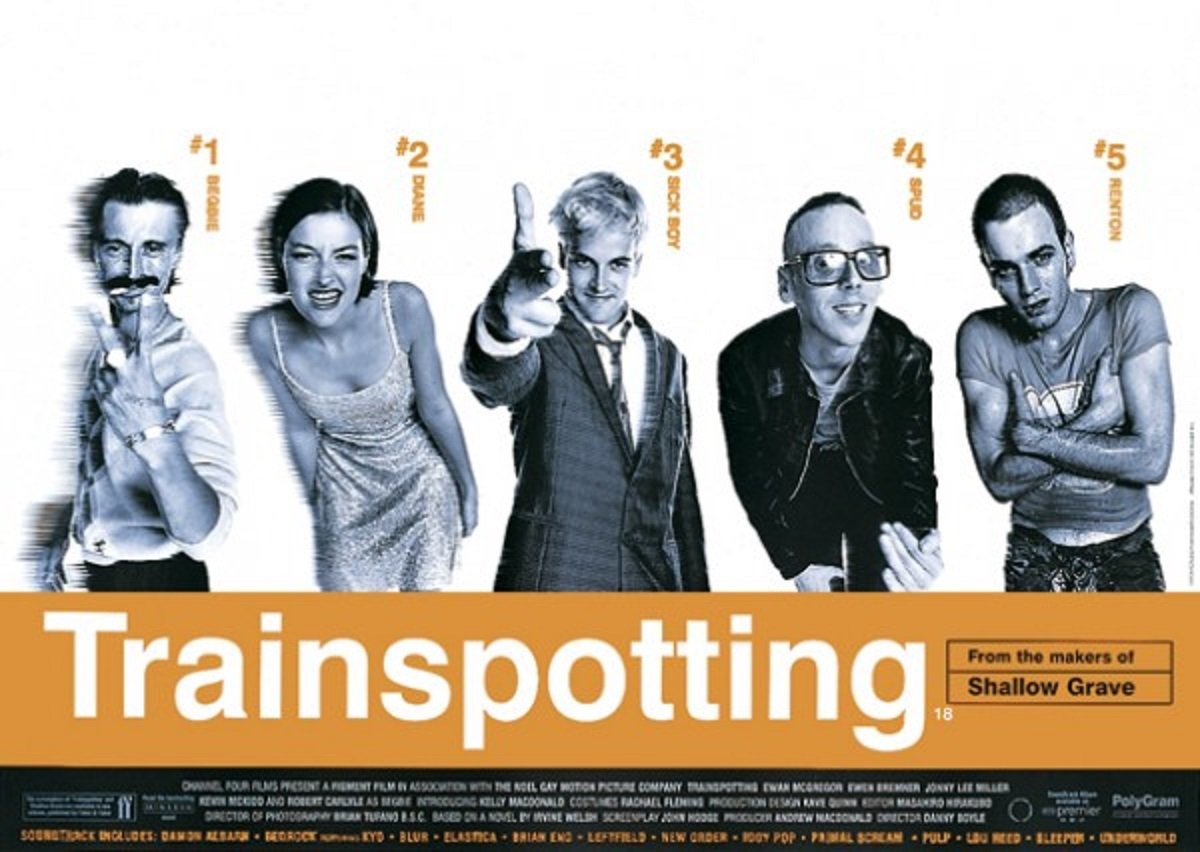
Pitchfork, the once-insurgent, now-venerable music site known for provoking endless debates with its “Best Of” lists, has now weighed in with its list of The 50 Best Movie Soundtracks of All Time.
I like this list; there’s some good choices, and some good copy. (“The Brown Sugar soundtrack is perfect because every time a song plays in the film, it connects directly with Taye Diggs’ outfit,” writes Alphonse Pierre.) However, it is fundamentally incorrect.
- Purple Rain is better than Superfly;
- A Hard Day’s Night is better than Help!;
- Good Will Hunting is not very good;
- Goodfellas is better than Boogie Nights;
- Malcolm X (which isn’t even on the list) is as good as if not better than Do The Right Thing;
- The Royal Tenenbaums is better than Rushmore.
All of the choices here are evidence of the Pitchfork Problem, which is that it tries to treat indie rock, hip-hop, techno, classic rock/pop, and soul/R&B music all at once, but winds up juggling them all in a way that tends to privilege first one genre, then another. Usually 90s indie rock (which was the site’s original bread-and-butter) will always win out.
Trainspotting is third on the list, which both reflects this bias and (in my opinion) is basically accurate.
Anyways, enjoy.
The latest issue of @kottke’s Noticing newsletter just went out to over 10,000 subscribers. This newsletter has it all: Throwbacks, Journeys, and the End of All Things.
A Japanese Illustrated History of the United States from 1861


With the 1853 arrival of Commodore Matthew Perry on the shores of Japan, the isolationist country was introduced to the United States in a rather American fashion: trade with us or we’ll open fire. Faced with a seemingly overwhelming military force, the Japanese opened their country to foreign trade in the years following. Published just a few years later in 1861 by writer Kanagaki Robun and illustrator Utagawa Yoshitora, Osanaetoki Bankokubanashi is an illustrated history of America that provides a glimpse into how the Japanese perceived their new trading partners.
For instance, the two pages above feature George Washington fighting a tiger with his bare hands and John Adams battling a massive snake with a sword. As Japanese historian Nick Kapur notes in this thread, the book also contains illustrations of a burly Ben Franklin wielding a cannon as well as many other amazing and fantastical scenes. (via open culture)
Trailer for Fleabag Season Two
After a nearly three-year wait, the second season of the excellent Fleabag is coming soon (March 4 in the UK, May 17 in the US on Amazon). Here’s a snack-sized trailer:
If you aren’t on the Fleabag train yet (and you definitely should be), you can catch up with the first season on Amazon Prime (it’s only six 25-minute episodes). Oh, and you can catch series creator and star Phoebe Waller-Bridge in Fleabag the play in NYC starting next week.
Heartbreaking: This Man Works For A Website. “Out of everything he could have done with his finite and precious lifespan, he foolishly chose to spend it toiling away pumping out bite-sized pieces of ‘content’…”
When Kids Realize Their Whole Life Is Already Online. “…parents, schools, sports teams, and organizations have been curating an online presence for them since birth.”
Crowd Goes Nuts for Extremely Satisfying DVD Logo Bounce
Popping bubble wrap, sharpening a new pencil, catching a falling glass in the knick of time, waking up before your alarm. Some things are just really, really satisfying. If you’re of a certain age, you’ve probably spent more time than you’d care to admit staring at a TV for an extremely gratifying event to occur: when the bouncing DVD logo hits perfectly in the corner of the screen. Watch this bar crowd go absolutely bonkers celebrating this thrilling occurence:
I watched this at least 5 times and am still chuckling about it 20 minutes later. I don’t even care that it’s fake…that was beautiful. (via @StephMBuck)
Update: I love this…if you have 100 bouncing DVD logos, you can hit the corners a lot more often.
“Counting push-ups can help predict your risk of heart disease.” What does 32 push-ups get you? (Asking for a friend…)
Confessions of an Adventurous Picky Eater
Amanda Mull on How to Stop Hating Your Least Favorite Food:
I’ve never had a traumatic barf experience with cucumbers, so my aversion is probably just an innate dislike. And the culprit behind my long-term cuke hatred might be in the vegetable’s smell, more specifically than its taste. “What we call ‘taste’ is really ‘flavor,’ which is a mixture of taste, smell, and texture,” Sclafani says. People lose olfactory sensitivity as they age, which is a big reason that many people seem to outgrow childhood aversions: A food that might have been overwhelming to a kid will read as more mellow to an adult. I’m in my 30s, so there’s a decent chance that, were I to give cucumbers a fair shake, I’d hate them a lot less than my childhood memories have led me to believe.
In recent years, I’ve come to the grudging conclusion that I am somewhat of a picky eater (with a couple of caveats that I’ll get into below). I grew up in the Midwest in the 80s, which meant I mostly ate meat & potatoes, pizza, and various things on white bread when I was a kid. Campbell soups were wielded by Midwestern parents to super-charge supper casseroles like Escoffier used béchamel or hollandaise. Vegetables were shunned and feared.
In my 20s and out of the Midwest, I started eating a wider variety of foods and some of my least favorite things — broccoli, mushrooms, beets, onions — are now among my favorites. The flavors of Japanese food (sushi, ramen) took a long time to get used to, but now I love them. Other foods — mustard, raw oysters, eggplant — I have repeatedly tried and failed to appreciate as others clearly do. Part of my problem, as I found out around that time, is that I’m a supertaster. That sounds cool, like I’m Spider-Man or something, but it really means that I’m an oversensitive taster, with a proclivity for bland food and sensitivity to bitter tastes (helloooo vegetables).
I’ve also realized that a lot of the food I ate as a kid wasn’t particularly fresh or well-prepared. Tacos were hard-shelled and flavor-packet-based, fish was in stick form, and Chinese food came out of a can. Canned mushrooms aren’t that great in comparison to fresh ones, and there’s a wonderland of flavorful mushroom varieties beyond the button. In the winter in rural Wisconsin, you couldn’t even buy fresh out-of-season vegetables like tomatoes in the grocery store in the 80s.
The weird thing is that I’m actually a pretty adventurous eater. If something is well-prepared and fresh, I will eat it. I never order anything “on the side” at a restaurant or ask them to skip an ingredient I don’t care for.1 My answer to a server’s “do you have any allergies or dietary restrictions?” is always “no”. I eat a lot of things that many other people won’t: tongue, liver, brains, tripe, sweetbreads, etc. When I am drinking alcohol,1 I will consume just about any kind of bitter digestif you can throw at me. The key for me, as Mull notes in the article, is that “gentle, steady exposure” can overcome many food aversions. Eventually, the adventurousness wins out over my picky palate. Except for raw oysters…I don’t know that I’ll ever eat them and enjoy the taste of low tide in my mouth.
The only real exception to this is mustard because if there’s a smear of mustard on, for example, a Katz’s pastrami sandwich, it completely overwhelms the taste of the pastrami and rye bread for me. The “no mustard” thing has brought me a lot of ridicule over the years from hot dog and hot sandwich purists, but it can’t be helped.↩
Which I am currently not, a topic that probably deserves its own post sometime.↩
That time Jimi Hendrix came to London and blew all the other guitar players out of the water. Eric Clapton: “You never told me he was *that* fucking good.”
Leaving Neverland
Set to air on HBO starting March 3rd, Leaving Neverland is a two-part documentary film about the experiences of two men who were befriended by and allegedly sexually abused by Michael Jackson as young boys. Here’s the trailer:
Leaving Neverland is a two-part documentary exploring the separate but parallel experiences of two young boys, James Safechuck, at age ten, and Wade Robson, at age seven, both of whom were befriended by Michael Jackson. Through gut-wrenching interviews with Safechuck, now 37, and Robson, now 41, as well as their mothers, wives and siblings, the film crafts a portrait of sustained abuse, exploring the complicated feelings that led both men to confront their experiences after both had a young son of his own.
As this quick timeline of abuse allegations against Jackson notes, both Safechuck and Robson previously denied that Jackson had abused them.
Robson, by this point a choreographer for stars like Britney Spears, testified that he had spent the night at Neverland more than 20 times but that Jackson had never molested him or taken a shower with him.
James Safechuck, who had met Jackson as a young boy in the 1980s when he was cast in a Pepsi commercial, also denied publicly that he had been abused, although he was not called to testify.
David Ehrlich saw the film at Sundance and was completely convinced by the stories of the two men.
It may not be much of a secret that Michael Jackson acted inappropriately with a number of young boys, but there’s no way to prepare yourself for the sickening forensic details presented in Dan Reed’s four-hour exposé. It’s one thing to be vaguely aware of the various allegations that were made against the King of Pop; the asterisks that will always be next to the late mega-star’s name. It’s quite another to hear the horrifyingly lucid testimony that stretches across the entire duration of “Leaving Neverland,” as two of Jackson’s most repeat victims bravely lay bare how a universal icon seduced them away from their realities, splintered their families beyond all recognition, and leveraged their love for him into a disturbing litany of sexual acts.
The eloquent and straightforward “Leaving Neverland” was made for no other reason than to give shape to a nebulous cloud of rumors, many of which were floated in public before they were silenced behind settlements, and none of which a jury was able to prove beyond a reasonable doubt. In the wake of Reed’s film and the shattering interview footage that it exists to share with us, there’s no longer a reasonable doubt. There’s no longer any doubt at all. Not only do the documentary’s two main subjects perfectly corroborate their separate accounts in all of the most tragic of ways, but they do so with a degree of vulnerability that denies any room for skepticism.
Other stars who previously had private or ignored abuse allegations leveled against them — Kevin Spacey, Bill Cosby, R. Kelly, Woody Allen, Louis CK — have been judged more harshly and their accusers have taken more seriously in recent years, and it’ll be interesting to see what happens with Jackson after the documentary airs.
The Augmented Reality Sandbox
Inspired by a Czech project, a team at UC Davis is building an Augmented Reality Sandbox that lets you create & study different landscapes by moving real sand around in a real sandbox. Check this out — the topographic lines and colors change in realtime as you move the sand around:
As part of this project, we are primarily developing 3D visualization applications to teach earth science concepts, but we also built a hands-on exhibit combining a real sandbox, and virtual topography and water created using a closed loop of a Microsoft Kinect 3D camera, powerful simulation and visualization software, and a data projector. The resulting augmented reality (AR) sandbox allows users to create topography models by shaping real sand, which is then augmented in real time by an elevation color map, topographic contour lines, and simulated water. The system teaches geographic, geologic, and hydrologic concepts such as how to read a topography map, the meaning of contour lines, watersheds, catchment areas, levees, etc.
That video is from several years ago…here’s a more recent video showing a hybrid AR/VR sandbox setup:
The software is available to download so if you want to build your own, go for it. (via a map a day)
A short history of Altavista, the search engine that ruled the Web before Google. Not many remember that Altavista’s search results were better for quite awhile after Google launched.
How People Spent Sudden Financial Windfalls
Topic asked more than a dozen people how they spent sudden windfalls of money. Among those queried were two MacArthur grant winners, people who inherited money, game show winners, a professional poker player, and a woman who lost her house because of Hurricane Maria. TV writer & editor Danielle Henderson:
The only directive I’ve ever given my agent, my manager, anyone on my team, is to make sure I get paid like a white man. I do not want to get any offers that are lower than average because I’m a woman or I’m black. I’m not out here demanding a quadrillion dollars, but if I see that somebody’s sold a project for a certain amount and my project is in a similar vein, I’m not settling for less than that.
Planetary scientist Sara Seager:
When I got my MacArthur award in 2013, they asked, “What are you going to spend the money on?” I said, “I’m going to spend it all on household help so I can spend more time with my kids and more time on my job.”
If you have kids, or a person who relies solely on you, not only do you have to take care of them and want to spend time with them, but you have to make their breakfast and their lunch, if they’re really little. And then clean up after them. There’s this endless series of chores. I got tons of responses from people saying, “I can’t believe you said that,” because people won’t admit that. People don’t want to admit the price you pay for working.
Author Ijeoma Oluo wrote a separate article about spending the royalties from her bestselling book on a house for her mom.
A big check, for $70,000. No, we’re not talking a big Publishers Clearing House grand-prize check, but it was definitely the biggest check I’d ever held with my name on it.
I gazed at the statement, then closed my eyes for a moment and said to myself:
“I can build mom a home now.”
It was the first time I felt truly successful in every sense of the word.
Neighborhood Golf Association
Street photographer Patrick Barr has been out photographing NYC since the 1990s. Barr also goes by the name of Tiger Hood (or Nappy Gilmore) and when he’s out on the street selling prints of his photographs, he passes the time playing a street golf game of his own invention.
It’s a game that requires only three items: a golf club, a newspaper-stuffed milk carton, and a crate. What was initially just a way for Barr to pass time has gained traction from major news outlets and celebrities on a global scale. However, street golf seems to overshadow his true passion… photography. Barr’s archive consists of thousands of mind blowing film photographs of NYC from the 1990’s to 2000’s. His goal was to preserve a time and place that he predicted would dissolve in the coming years. With his archive as evidence, he predicted correctly.
You can find some of Barr’s photos on Flickr and Instagram but if you want to buy a print, you’ll have to catch him on the streets of lower Manhattan.
What Is Intersectionality?
Maybe you’ve heard the term “intersectionality” used on social media — in the context of feminism or racism — and you know in a hand-wavy sort of way what it means but don’t really know its exact definition or where it came from. Well, Kat Blaque has you covered. In this YouTube video and in this Twitter thread, she explains that intersectionality was first described by Kimberlé Crenshaw, now Professor of Law at UCLA and Columbia Law School, in a 1989 article called Demarginalizing the Intersection of Race and Sex: A Black Feminist Critique of Antidiscrimination Doctrine, Feminist Theory and Antiracist Politics.
Blaque’s summary of the paper on Twitter is crisp and concise:
To summarize what she meant when she defined intersectionality: It was about how black women were erased in conversations about discrimination because the feminist movement and the civil rights movement focused largely on its most privileged members.
So feminism, at the time (and arguably still) focused largely on white women’s experiences with sexism and the civil rights movement focused, at the time (and arguably still) focused on how black men experienced racism. So black women’s experiences had to be measured against that.
Meaning that in several legal cases, explained in the document and my video, if a black woman’s experiences with discrimination weren’t paralleled to how black men experience racism and white women experience sexism, their cases were dismissed or thrown out.
So you had cases where black women would sue a company for racial discrimination and then you’d have the judge say that it was impossible for that to be true, because they currently employed black people. The problem was, the black people were all men.
There’s obviously a lot more in Crenshaw’s paper, including this point near the end:
It is somewhat ironic that those concerned with alleviating the ills of racism and sexism should adopt such a top-down approach to discrimination. If their efforts instead began with addressing the needs and problems of those who are most disadvantaged and with restructuring and remaking the world where necessary, then others who are singularly disadvantaged would also benefit. In addition, it seems that placing those who currently are marginalized in the center is the most effective way to resist efforts to compartmentalize experiences and undermine potential collective action.
(via @john_overholt)
A Detailed Map of Medieval Trade Routes in Europe, Asia, and Africa


Grad student Martin Jan Månsson has created this incredibly detailed map of trade route networks in Europe, Asia, and Africa in the 11th and 12th centuries.
Even before modern times the Afro-Eurasian world was already well connected. This map depicts the main trading arteries of the high middle ages, just after the decline of the Vikings and before the rise of the Mongols, the Hansa and well before the Portuguese rounded the Cape of Good Hope.
The map also depicts the general topography, rivers, mountain passes and named routes. All of which contributed to why cities came to be, and still are, up until modern times.
The high middle ages were a time when the stars aligned in terms of commerce for many areas of the world. In central Europe many German and French cities initiated annual trade fairs, some of which are still active today — most notably in Frankfurt. The Europeans have redeveloped a demand for eastern goods as a result of the crusades in Iberia and the Levant. The Italian city states and some north eastern Iberian cities had shipped the crusaders back and forth in the Mediterranean sea, building up huge fleets and setting up networks of trade all around the Mediterranean shores. The Italians frequented ports such as Alexandria, which had separate trading ports for muslim and christian ships.
You can play with a zoomable version here.
The saying is that “all roads lead to Rome” but as this map shows, that assertion belongs to an earlier era. In the 12th century, it was more accurate to say that all roads lead to Constantinople or Cairo or Baghdad or Hanzhong…or perhaps even “all roads lead to everywhere”. It’s not quite globalization, but many of the world’s peoples were well on their way to connecting with everyone else.
P.S. I have heard many good things about Peter Frankopan’s The Silk Roads. It’s been sitting on my (virtual) bedside table for several months now…I think I might make it my next read. Has anyone read it?
WNBA player Devereaux Peters on the constant requests she receives from men to play one-on-one. “Time and time again, I have trounced men — far too many to count. Now I have nothing to prove.”
National Geographic’s Upcoming Documentary on the Apollo Missions
With the 50th anniversary of the Moon landing coming up this summer, the media is about to go into Apollo overdrive. (And I am fully here for it!) So far, there’s been First Man and this Apollo 11 documentary featuring a recently discovered trove of 65mm footage. Add to that Apollo: Missions to the Moon, a documentary series by Tom Jennings for National Geographic. Here’s the trailer:
Engadget has some info on the content of the film:
Director Tom Jennings (who previously documented the Challenger explosion and Princess Diana) is relying on a few uncommon technological tricks to enrich the experience. He’s melding NASA footage with Apollo black box recordings, for example, and is syncing 30-track audio from Mission Control. The aim is to create an “Apollo-era time machine,” Jennings said.
Add an original Hans Zimmer soundtrack into the mix and this could really be something special.
Go-karts on a frozen river. This looks fun as hell.
My Recent Media Diet, the “Please God Let Winter Be Over Soon” Edition
I’ve been keeping track of every media thing I “consume”, so here are quick reviews of some things I’ve read, seen, heard, and experienced since the beginning of the year. One of the reasons I like doing these posts is the great recommendations I get back from readers. Turns out some of you know me and my tastes pretty well by now. For instance, a reader emailed a rec for the amazing Apollo 13 podcast listed below. I never would have found that on my own…thanks, Jason (no relation).
Vice. Inventive filmmaking from McKay. Watching parts of this was difficult though…Cheney is a ghoul. (B+)
Bird Box. Mindless but fun. The aliens made no sense… (B)
Rainbrow. Faces weren’t designed to control games. I think I may have sprained my eyebrows? (C+)
Roma. A masterpiece from Cuarón. My pick for the best film of 2018. (A)
A Fish Called Wanda. What was the middle one again? (B+)
The Apollo 13 series on the Brady Heywood Podcast. Sean Brady is a forensic engineer and in this five-part series about the Apollo 13 mission, he does a play-by-play of what went wrong on the mission and how the NASA and the three astronauts worked together to solve it. This is five hours of storytelling stuffed full of technical details and I was completely riveted the entire time. A thrilling engineering tale. (A)
Uplift standing desk. Still getting used to it, but I like being able to alternate between sitting and standing. (B+)
Sir Gawain and the Green Knight. I read the Simon Armitage translation to the kids as our bedtime story over the course of a few weeks. The English epic was not the fan favorite that Harry Potter or the Odyssey were. (B)
The Departed. Probably not the best Scorsese film but perhaps my favorite? (A)
Desktop Tower Defense. I still love this game. (A-)
Coming of Age in the Milky Way by Timothy Ferris. A bracing history of how humans learned where and when we are in the universe. (B+)
They Shall Not Grow Old. The restoration & colorization brought World War I right into the present, but I found myself wondering if all the digital editing & sound effects crossed the line into fiction. (B+)
Shoplifters. What does “family” mean in the 21st century? Watching this made me think of this story about older Japanese women purposefully shoplifting in order to go to jail. (A)
The Lego Movie 2: The Second Part. I had no idea going in that this movie was exactly about my family: an older boy (who likes space battles) and younger girl (who likes Friends and parties) who struggle to play Legos together under constant threat of me chucking all of them into the trash if they don’t stop fighting. They nailed it, right down to the crack about Radiohead’s music being depressing…every time I play RH in the car, I hear a chorus of boos from the back seat. (A-)
The Mule. I don’t know who this movie is for or why I went to see it. (D+)
Minding the Gap. You might think this is about how skateboarding binds three friends together. And it is! But it’s also about the compounding debt of domestic violence, toxic masculinity, and economic depression in America. My sole complaint is that it could easily have been 30 minutes longer. (A)
Classic Doctor Who marathon on Twitch. Nothing makes me more nostalgic for my childhood than old episodes of Doctor Who. I may have over-indulged in this marathon. (B+)
You Were Never Really Here. Excellent direction, music, and sound design. (B+)
Widows. Fun ensemble thriller. (B+)
Burning. Engaging but the slow burn was a bit too slow. I also watched this in a terrible theater and my opinion might have been different if the quality were better. (B+)
If Beale Street Could Talk. Beautifully filmed romantic dread. I didn’t know whether to feel happy or sad at the end. (A-)
Russian Doll. Groundhog Day adjacent. Natasha Lyonne is mesmerizing. (B+)
Killing Eve. Was I supposed to hate both of the very annoying main characters? And why is everyone so incompetent at their jobs? Villanelle is so sloppy and arrogant she would never have gotten away with one murder, let alone a dozen. I don’t think this show is for me, but I can see why others like it. (B-)
The Three-Body Problem trilogy by Liu Cixin. A re-read…burned through all three books in a week, by far the most concentrated reading I’ve done in years. (A)
Crazy Rich Asians. A rewatch. I’m not suggesting this should be up for Best Picture at the Oscars or anything, but this movie deserves some end-of-the-year recognition as a romantic comedy that also did some heavy thematic lifting without being either frivolous or overbearing. The filmmakers hit it just right. (A-)
Heat. This is Allen Iverson’s favorite movie. No one chews scenery like Pacino in this movie. Wow. (B+)
Past installments of my media diet are available here.
We’re All Lonely Together
We’re living in an age of unprecedented connectedness, but more and more people report being lonely on a regular basis. Like our affinity for sugary foods, the feeling of loneliness turns out to be another one of those things that served humans well when we lived in small hunter-gatherer groups tens of thousands of years ago but often works against us in our individualist modern world. Kurzgesagt explains:
I identified with a lot of this video. Moving to a new place where I’m having trouble fitting in and don’t know a lot of people has been difficult, especially when I’m trying to spend time with my family and maintaining a business that takes up a lot of time. I really liked the bit at the end where they recommend reaching out to someone today. I think I’ll do just that. How about you?
How Presidents Day, a once-neglected holiday, became synonymous with shopping. It all started with bicycles…
John Pfaff discovers his old Apple IIe in his parents’ attic in perfect working order, floppy disks and all. He spends hours exploring old apps & games…
“The Age of Climate Panic Is Here”
David Wallace-Wells, who you may remember from his 2017 New York magazine piece, has written an opinion piece about climate change for the NY Times called Time to Panic. In it, he urges that it’s time for urgent human action on climate change…time to stop treating it like a problem and start treating it like the crisis it is.
The age of climate panic is here. Last summer, a heat wave baked the entire Northern Hemisphere, killing dozens from Quebec to Japan. Some of the most destructive wildfires in California history turned more than a million acres to ash, along the way melting the tires and the sneakers of those trying to escape the flames. Pacific hurricanes forced three million people in China to flee and wiped away almost all of Hawaii’s East Island.
We are living today in a world that has warmed by just one degree Celsius (1.8 degrees Fahrenheit) since the late 1800s, when records began on a global scale. We are adding planet-warming carbon dioxide to the atmosphere at a rate faster than at any point in human history since the beginning of industrialization.
In October, the United Nations Intergovernmental Panel on Climate Change released what has become known as its “Doomsday” report — “a deafening, piercing smoke alarm going off in the kitchen,” as one United Nations official described it — detailing climate effects at 1.5 and two degrees Celsius of warming (2.7 and 3.6 degrees Fahrenheit). At the opening of a major United Nations conference two months later, David Attenborough, the mellifluous voice of the BBC’s “Planet Earth” and now an environmental conscience for the English-speaking world, put it even more bleakly: “If we don’t take action,” he said, “the collapse of our civilizations and the extinction of much of the natural world is on the horizon.”
Scientists have felt this way for a while. But they have not often talked like it. For decades, there were few things with a worse reputation than “alarmism” among those studying climate change.
This is a bit strange. You don’t typically hear from public health experts about the need for circumspection in describing the risks of carcinogens, for instance. The climatologist James Hansen, who testified before Congress about global warming in 1988, has called the phenomenon “scientific reticence” and chastised his colleagues for it — for editing their own observations so conscientiously that they failed to communicate how dire the threat actually was.
This essay is adapted from Wallace-Wells’ new book The Uninhabitable Earth, which is out tomorrow:
In his travelogue of our near future, David Wallace-Wells brings into stark relief the climate troubles that await — food shortages, refugee emergencies, and other crises that will reshape the globe. But the world will be remade by warming in more profound ways as well, transforming our politics, our culture, our relationship to technology, and our sense of history. It will be all-encompassing, shaping and distorting nearly every aspect of human life as it is lived today.
Hey, you can watch the excellent Minding the Gap on PBS tonight (or on Hulu any time). It’s nominated for Best Documentary at the Oscars this year.
I don’t understand Tarot really, but as an Achewood fan, I love seeing any of these panels in any order at all. So I love this Glitch app:
Colin Kaepernick and Eric Reid have settled their collusion lawsuit against the NFL. The monetary figure is confidential, but guesses/estimates put it between $60 to $80 million.
Steven Soderbergh’s Theories on the History and Future of Movies
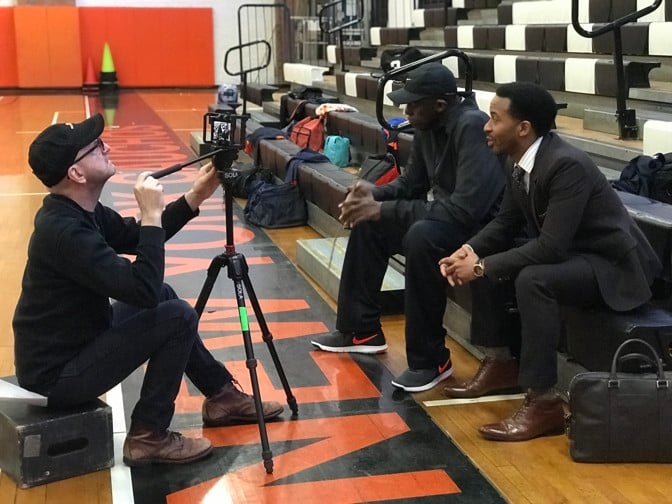
Filmmaker Steven Soderbergh had a very interesting interview with The Atlantic’s David Sims. Here are some excerpts.
The first (and maybe the juiciest) is on how September 11 changed the genre palate of the movie industry.
Sims: Most of the studio movies you made were in the the mid-budget tier that Hollywood doesn’t make anymore. What happened to it?
Soderbergh: Look, I have a lot of crackpot theories about how moviegoing has changed and why.
Sims: I would like to hear your crackpot theories.
Soderbergh: One of the most extreme is, I really feel that why people go to the movies has changed since 9/11. My feeling is that what people want when they go to a movie shifted more toward escapist fare. And as a result, most of the more “serious” adult fare, what I would pejoratively refer to as “Oscar bait,” all gets pushed into October, November, December.
Sims: And people have become conditioned, in the fall, to go and see a couple of serious movies.
Soderbergh: Put on a heavy coat and go see something serious. What that creates is what you see now, which is this weird dichotomy of fantasy spectacle; low-budget genre, whether it’s horror or comedy; and the year-end awards movies. I guess that’s a trichotomy.
Sims: From January to March, you can have some cheap fun, then in March, here we go …
Soderbergh: The big shit’s coming.
The second (and maybe the most interesting) is how partnering with distributors like Amazon and Netflix might create different markets for different kinds of movies.
Sims: You tried [a simultaneous in-theaters and home release] with Bubble in 2005, back before anyone thought that was a thing you could do. You tried it with The Girlfriend Experience in 2009. Were you just inventing the wheel before there was a car to put it on? What’s changed in the past 15 years?
Soderbergh: Well, I ran into the problem that all platforms are having, which is that the big chains don’t want to engage with this. I know [the National Association of Theatre Owners president,] John Fithian well, and have had a lot of interaction with NATO, and I am sympathetic to this issue. What I don’t understand is why everyone in this business thinks there is one template that is gonna be the unified field theory of “windowing” [or how long a movie screens in theaters]. The minute that I knew, which is usually around Friday at noon, that Logan Lucky wasn’t going to work and that Unsane was definitely not gonna work—as soon as that happens, the studio should let me drop the movie on a platform the next week. There should be a mechanism for when something dies at the box office like that.
Sims: A backup option of, You know what, if it doesn’t hit this number on opening weekend, then release it online.
Soderbergh: I think in abject failures, they should let you do whatever the hell you want. If Unsane drops and doesn’t perform, who’s harmed exactly by me 10 days later putting this thing on a platform? You can’t prove to me that that’s hurting your business.
And last, and the most concise, is on how Soderbergh would change the Oscars if he were in charge.
Sims: What do you think of the Oscars potentially excluding some categories from being televised live?
Soderbergh: There was some discussion for a minute about the Oscars doing what the Emmys do—having two ceremonies. Everybody shouted that down and said they would be creating two tiers. What I wanted to do was produce that show: We’ll go back to the Roosevelt Hotel, every nominee can bring a plus-one, and that’s it. Super intimate, food, drink, all that, you can get up there and talk all you want. It’s not televised. It’s a private event for the nominees and their significant others. Make it fun and cool. ‘Cause here’s the dirty secret: Going to the big thing is not fun. It’s more fun to watch on TV. The trick would be doing something super cool and small.
I also think it’s both interesting and cool that Soderbergh is shooting video using an iPhone now. The small size, he argues, is actually an advantage. As he tells Sims, “The more things you can eliminate that actors have to ignore, the better.”
Captain Jean-Luc Picard plays the flute (for complex reasons involving aliens and alternate lifetimes). Sir Patrick Stewart cannot play the flute. So when Picard plays the flute, a hands double plays the flute for him, and the music is dubbed in later.
Great interview with Meg Ryan by David Marchese. “Everyone is so happy on social media. It’s depressing.”
What happened with Amazon canceling its plans to build a second headquarters in New York? @tcarmody’s (that’s me) newsletter @AmazonChron has the answers (along with bonus KRS-One lyrics):
What Is It Like To Turn On A Light?
So I am something of a philosophy nerd, with a particular affection for late 19th/early 20th century European philosophers, who had a lamentable habit of either turning out to be Nazis or becoming victims of the Nazis. One important strand of this Nazi/Nazi-victim movement in European thought is phenomenology, which tried to describe in painful detail and using all-original categories what the experience of everyday life for both persons and things was like. As it happened, the experience of everyday life was in deep flux at this time, so a lot of their categories/arguments/distinctions turn out to actually capture that historical moment particularly well, which is not at all what they thought they were trying to do.
If you want to try out a light version of phenomenology, applied to both that historical moment and our own, you could do a lot worse than reading Dan Hill’s essay “Let There Be Light Switches: From Dark Living Rooms To Dark Ecology.” Hill takes something extremely ordinary—the experience of looking for, finding, and flipping a light switch—and finds the philosophy in it:
Pallasmaa, in his The Eyes of the Skin, noted that touch is a key part of remembering and understanding, that “tactile sense connects us with time and tradition: through impressions of touch we shake the hands of countless generations”. Is this reach for the switch merely functional, then? A light switch can stick around for decades, as with the doorhandle. When you touch the switch, you are subconsciously sensing the presence of others who have done so before you, and all those yet to do so. You are also directly touching infrastructure, the network of cables twisting out from our houses, from the writhing wires under our fingertips to the thicker fibres of cables, like limbs wrapped around each other, out into the countryside, into the National Grid.
If we always replace touch with voice activation, or simply by our presence entering a room, we are barely thinking or understanding, placing things out of mind. While data about those interactions exist, it is elsewhere, perceptible only to the eyes of the algorithm. We lose another element of our physicality, leaving no mark, literally. No sense of patina develops, except in invisible lines of code, datapoints feeding imperceptible learning systems of unknown provenance. As is often the case with unthinking smart systems, it is a highly individualising interface, revealing no trace of others.
This is… not easy to read. But there’s a lot going on here! I particularly like the invocation of Martin “I Was, Like, Extra-Nazi” Heidegger’s useful distinction between “zuhanden” (to-hand? at-hand?) and “vorhanden” (something like “present-at-hand”? Oh, German is impossible!) to describe categories of objects.
Or, hey; how about this: when it’s “zuhanden,” it’s a thing, and when it’s “vorhanden,” it’s an object.
Heidegger’s word for how light switches seem to peer out at you like minor characters in an Expressionist painting is vorhanden, which means present-at-hand. Normally things kind of disappear as you concentrate on your tasks. The light switch is just part of your daily routine, you flick it on, you want to boil the kettle for some coffee—you are stumbling around, in other words, stumbling around your kitchen in the early morning light of truthiness. (From Being Ecological, Timothy Morton)
That thing when things “disappear” is zuhanden; they just kind of melt into the environment, and so do you, just a being among beings, all working together. The ultimate expression of zuhanden is “flow,” which Heidegger and Csikszentmihalyi both ripped off from Tolstoy in Anna Karenina, with Levin mowing the hay with his peasants:
He thought of nothing, wished for nothing, but not to be left behind the peasants, and to do his work as well as possible. He heard nothing but the swish of scythes, and saw before him Tit’s upright figure mowing away, the crescent-shaped curve of the cut grass, the grass and flower heads slowly and rhythmically falling before the blade of his scythe, and ahead of him the end of the row, where would come the rest.
Suddenly, in the midst of his toil, without understanding what it was or whence it came, he felt a pleasant sensation of chill on his hot, moist shoulders. He glanced at the sky in the interval for whetting the scythes. A heavy, lowering storm cloud had blown up, and big raindrops were falling. Some of the peasants went to their coats and put them on; others—just like Levin himself—merely shrugged their shoulders, enjoying the pleasant coolness of it.
Another row, and yet another row, followed—long rows and short rows, with good grass and with poor grass. Levin lost all sense of time, and could not have told whether it was late or early now. A change began to come over his work, which gave him immense satisfaction. In the midst of his toil there were moments during which he forgot what he was doing, and it came all easy to him, and at those same moments his row was almost as smooth and well cut as Tit’s. But so soon as he recollected what he was doing, and began trying to do better, he was at once conscious of all the difficulty of his task, and the row was badly mown.
On finishing yet another row he would have gone back to the top of the meadow again to begin the next, but Tit stopped, and going up to the old man said something in a low voice to him. They both looked at the sun. “What are they talking about, and why doesn’t he go back?” thought Levin, not guessing that the peasants had been mowing no less than four hours without stopping, and it was time for their lunch.
“Lunch, sir,” said the old man.
So we’ve had light switches long enough that they pass into our ordinary, everyday zuhanden state (or its extraordinary flow variation), except when we stumble over them and have to think about them, like these newfangled smart lights and voice switches. This means these everyday things are becoming objects again, until we can incorporate them into a new paradigm.
The light switch when jetlagged is vorhanden — suddenly present-at-hand, “oppressively obvious” —where usually its everyday resilience means it is zuhanden, simply ready-at-hand, normalised, routine. When “stumbling around”, he notes that we don’t pay attention to the object itself — here, the irreducible thing that is the light switch —and so nor do we stand any chance of paying attention to the broader systems of living, of infrastructure, that it is connected to, and part of - and, for Morton, our understanding of mass extinction due to climate change. And given Pallasmaa’s fundamental emphasis on touch as understanding, in order to truly sense and interact, this deleterious situation is hardly likely to improve when the analogue light switch disappears, when the object becomes further detached, and so may we.
More prosaically, how dull rooms will become if they are always automatically bright upon entering, just as the over-lit streets of our towns are increasingly sanitised of their mystery. The cornerstone of most horror movies, vanished overnight. Fortunately, smart homes will not work any more effectively than smart cities do, and a different sub-genre of horror movies will emerge, domestic versions of Stephen King’s Christine or 2001’s HAL.
Maybe this is all thinking too hard about an ordinary experience that is changing, sure, but not in some fundamental way that changes our relationship to things as such. But at the same time, what if it’s not thinking too hard enough?
There isn’t much more basic to our experience of the world, in the 20th century or the 21st, than our use of artificial light to take back the night, transform our work and our play, indeed, change the fundamental nature of communication and experience itself. It’s worth marveling at the change of experience, the change in expectation that that was, precisely now when those experiences and expectations are on the verge of changing again, first by the thousands, and then by the millions.
How do we find the light? How do we see? What do we need to see? What do we know by doing? These are basic questions any philosophy of experience, and any technology of experience, has to answer. Well, our technology of experience is changing. Maybe our philosophy of experience needs to first go back before it can go forward to something new.
The Official Archive of Prince GIFs
GIPHY, in collaboration with Paisley Park and Prince’s estate, has done a truly remarkable thing. It’s created an official archive of high-quality Prince GIFs, from virtually all of his music videos. You can browse it by album and by song.
The result is a veritable gold mine for both Prince fans and meme hunters.
It’s got the early stuff:
The classic stuff:
The stuff that’s so sexy it’s a little uncomfortable:
And the self-iconographic work at (what shouldn’t have been) the end:
Please note, however, that if you want reaction GIFs from Prince interviews, live shows, and other non-music-video appearances, you still have to use the regular search function like everyone else.
Via Anil Dash (who else?)
American kids are watching so much Peppa Pig that they’re using British English. “Oh dadd-ay, may we go on holiday, please?”
“Star Ribbon”, a USPS Stamp by Aaron James Draplin

It was not my intention to turn kottke.org into a stamp blog (recently: Ellsworth Kelly, Leonardo da Vinci) but you know what they say: cool postage comes in threes. My pal Aaron James Draplin recently shared on Instagram that he was asked to submit some designs for a stamp for the USPS and then, because he’s an awesome designer, one of his designs is going to become an actual stamp.
TEARS ROLLING DOWN MY CHEEKS: Last thing I want ANY post I put up to sound like some sweaty, formal press release, so I’ll just come out and say it: I GOT TO MAKE A STAMP, YOU GUYS.
I’ve had to keep my big trap shut for over a year on this one. And I when I got the call to throw some designs into the ring, I have to tell you, even that nod was enough. It was enough just to be that close to one of my FAVORITE institutions of all time: The American postage stamp.
Here’s why he’s so fond of stamps (I totally agree):
You know why I love stamps so much? Because everyone needs a stamp. Everyone gets to enjoy the art on them. Too many times, art and design is only for those who can afford it. Stamps? They are a democratization of design. And that? That’s my favorite kind of graphic design.
The design is a perfect illustration of Draplin’s throwback design style — it’s got that Spirit of ‘76 thing going on but is also solidly contemporary, just like his work for Field Notes. (via df)
Stamps Featuring Drawings by Leonardo da Vinci



The Royal Mail in the UK have released a set of stamps that feature drawings done by Leonardo da Vinci.
The Royal Collection holds the greatest collection of Leonardo’s drawings in existence, housed in the Print Room at Windsor Castle. Because they have been protected from light, fire and flood, they are in almost pristine condition and allow us to see exactly what Leonardo intended — and to observe his hand and mind at work, after a span of five centuries. These drawings are among the greatest artistic treasures of the United Kingdom.
The drawings are all taken from a collection owned by the royal family and will be featured in a distributed exhibition of Leonardo’s drawings happening around the UK this year. (via colossal)
The Secret History of Women in Coding
In an excerpt of his forthcoming book Coders, Clive Thompson writes about The Secret History of Women in Coding for the NY Times.
A good programmer was concise and elegant and never wasted a word. They were poets of bits. “It was like working logic puzzles — big, complicated logic puzzles,” Wilkes says. “I still have a very picky, precise mind, to a fault. I notice pictures that are crooked on the wall.”
What sort of person possesses that kind of mentality? Back then, it was assumed to be women. They had already played a foundational role in the prehistory of computing: During World War II, women operated some of the first computational machines used for code-breaking at Bletchley Park in Britain. In the United States, by 1960, according to government statistics, more than one in four programmers were women. At M.I.T.’s Lincoln Labs in the 1960s, where Wilkes worked, she recalls that most of those the government categorized as “career programmers” were female. It wasn’t high-status work — yet.
This all changed in the 80s, when computers and programming became, culturally, a mostly male pursuit.
By the ’80s, the early pioneering work done by female programmers had mostly been forgotten. In contrast, Hollywood was putting out precisely the opposite image: Computers were a male domain. In hit movies like “Revenge of the Nerds,” “Weird Science,” “Tron,” “WarGames” and others, the computer nerds were nearly always young white men. Video games, a significant gateway activity that led to an interest in computers, were pitched far more often at boys, as research in 1985 by Sara Kiesler, a professor at Carnegie Mellon, found. “In the culture, it became something that guys do and are good at,” says Kiesler, who is also a program manager at the National Science Foundation. “There were all kinds of things signaling that if you don’t have the right genes, you’re not welcome.”
See also Claire Evans’ excellent Broad Band: The Untold Story of the Women Who Made the Internet.
Leaving Room for the Beautiful Flowers
In his newsletter Life Is So Beautiful, Hugh Hollowell shares a story of doomsday, neighbors, and goodwill.
I met a prepper the other day. You know — they store food in the basement in the event the revolution happens and we all turn to cannibalism. He was at my house, and was looking at the layout for my little vegetable garden I am planning. He shook his head, and said I could grow more food than that, and then I would have lots to store up for “hard times”.
Nah, I said. “This is enough. It’s enough for us to eat and to have enough to share with our neighbors. This way, it still leaves room for beautiful flowers, and the beautiful yard and the shared food are like insurance payments, in a way. When hard times happen, we will have a bank of goodwill with our neighbors we are counting on to see us through.”
He told me I was naïve, and that my neighbors wouldn’t care about me at all.
“Maybe you are right”, I said. “But if I believed that, then I am living in the hard times now, and I sort of refuse to do that.”
He left our house unconvinced, but I will share some of my tomatoes with him anyway.
I often think of myself as a pessimistic optimist (or an optimistic pessimist) but if pressed to choose, I believe that people work together and help each other far far more than they work against each other.
1969 in Pictures
1969 was quite a year that saw the founding of Sesame Street, PBS, Monty Python, and the Internet as well as Woodstock and my favorite, the crew of Apollo 11 landing on the Moon.
At In Focus, Alan Taylor has collected 50 photos from 1969, a visual record of that iconic year.
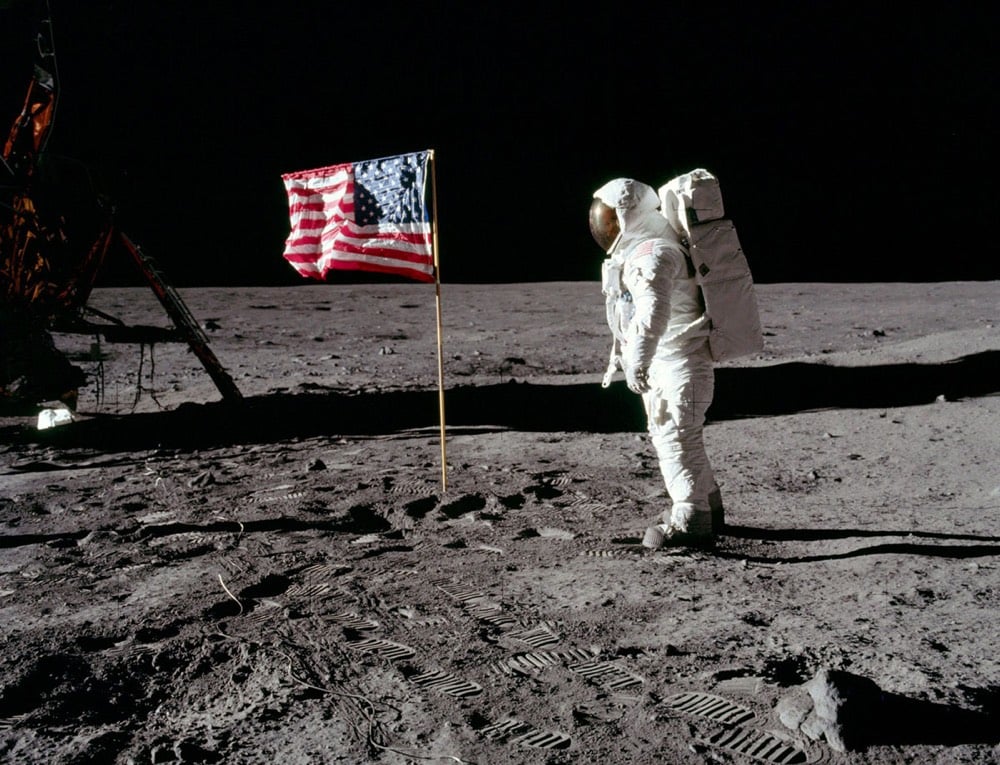


From top to bottom, Buzz Aldrin on the Moon, Queen Elizabeth riding on the Tube in London, and a billboard in Times Square featuring John Lennon & Yoko Ono’s message of peace.
Goodbye Opportunity, the Little Mars Rover that Could
Yesterday, NASA declared the official end to the Opportunity rover mission on Mars.
One of the most successful and enduring feats of interplanetary exploration, NASA’s Opportunity rover mission is at an end after almost 15 years exploring the surface of Mars and helping lay the groundwork for NASA’s return to the Red Planet.
The Opportunity rover stopped communicating with Earth when a severe Mars-wide dust storm blanketed its location in June 2018. After more than a thousand commands to restore contact, engineers in the Space Flight Operations Facility at NASA’s Jet Propulsion Laboratory (JPL) made their last attempt to revive Opportunity Tuesday, to no avail. The solar-powered rover’s final communication was received June 10.
Opportunity was the longest-lived robot ever sent to another planet; it lasted longer than anyone could have imagined.
Designed to last just 90 Martian days and travel 1,100 yards (1,000 meters), Opportunity vastly surpassed all expectations in its endurance, scientific value and longevity. In addition to exceeding its life expectancy by 60 times, the rover traveled more than 28 miles (45 kilometers) by the time it reached its most appropriate final resting spot on Mars — Perseverance Valley.
Here’s a quick video overview of the milestones of Opportunity’s mission:
The NY Times has a great interactive feature about the rover’s activities and achievements and XKCD has a tribute.
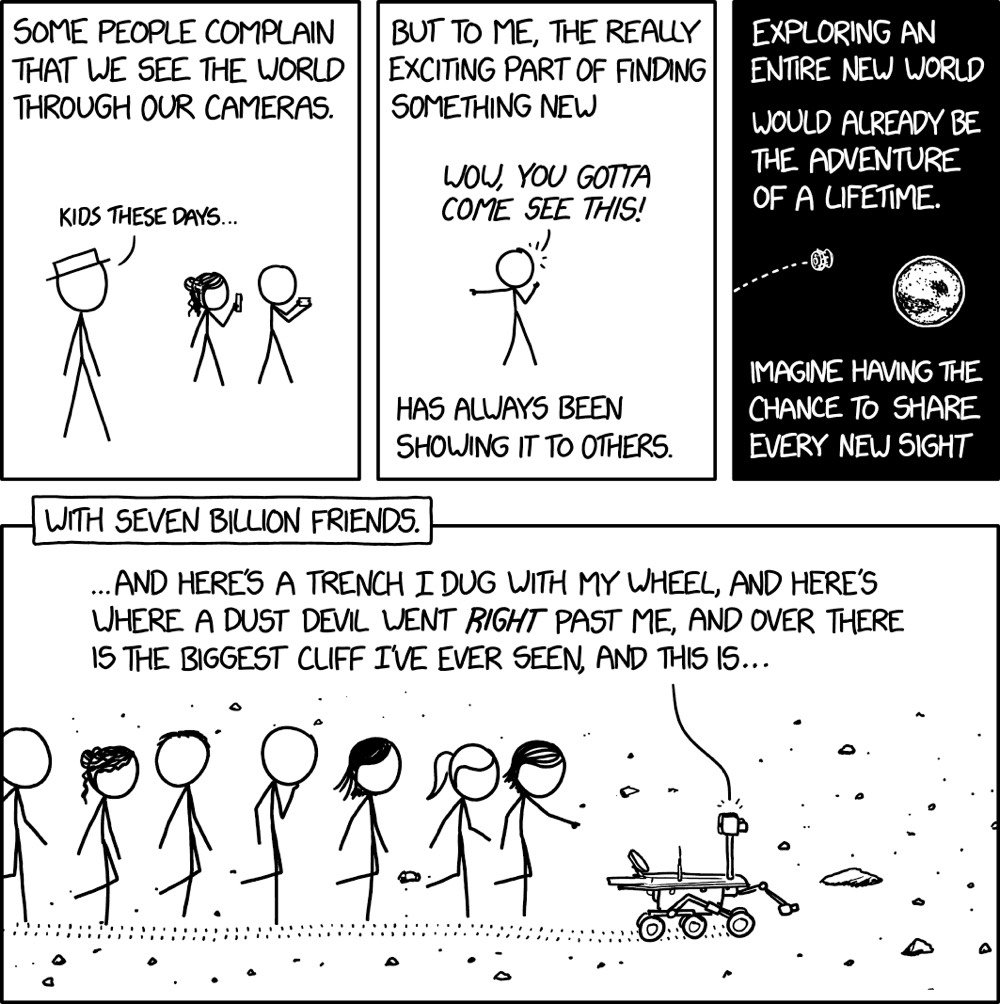
Photos of the Indigenous Peoples of Siberia
As part of his The World in Faces project, Alexander Khimushin has been making portraits of the indigenous people of Siberia wearing native dress.



The photo at the top is of three-year-old Gulnara Kayarina wearing her everyday outfit:
She lives in a portable little 2x3 meter house on skis, wrapped in the reindeer skins, at the endless tundra, about 50 km away from the nearest settlement of Tukhard (pronounced Too-Hard) — one the the remotest and coldest places of Krasnoyarsk Krai. Located at the Taymyr Peninsula (Arctic part of Siberia and the Northernmost region of Eurasia) Tukhard is accessible by helicopter only. Gulnara is one of two daughters in the family of reindeer herders Prokopy and Maya Kayarin. Her sister Rimma is a bit older, she is 5. Both girls live nomadic life with their parents and their reindeer in the vast snowy expanse of the tundra, extended as far as the edge on the Arctic Ocean. Nenets People are one of five ethnic group on Indigenous People of Taymyr Peninsula. Most of Nenets People still live traditional lifestyle in this extremely remote and coldest region of the world. Right now the region experiencing a so-called polar night — 45 days long period of total darkness. Winter temperature regularly drops below -40C/-40F. With a combination of strong winds with a speed as high as 35 meters/sec the climate of Taymyr is certainly one of the most extreme ones of the world.
W.E.B. Du Bois’ Data Portraits of Black American Circa 1900
A couple of years ago, I wrote about the hand-drawn infographics of W.E.B. Du Bois, noting that the great African American author, sociologist, historian, and activist was also a hell of a designer. Now Whitney Battle-Baptiste and Britt Rusert have collected Du Bois’ data portraits of black America into a new book, W.E.B. Du Bois’s Data Portraits: Visualizing Black America.
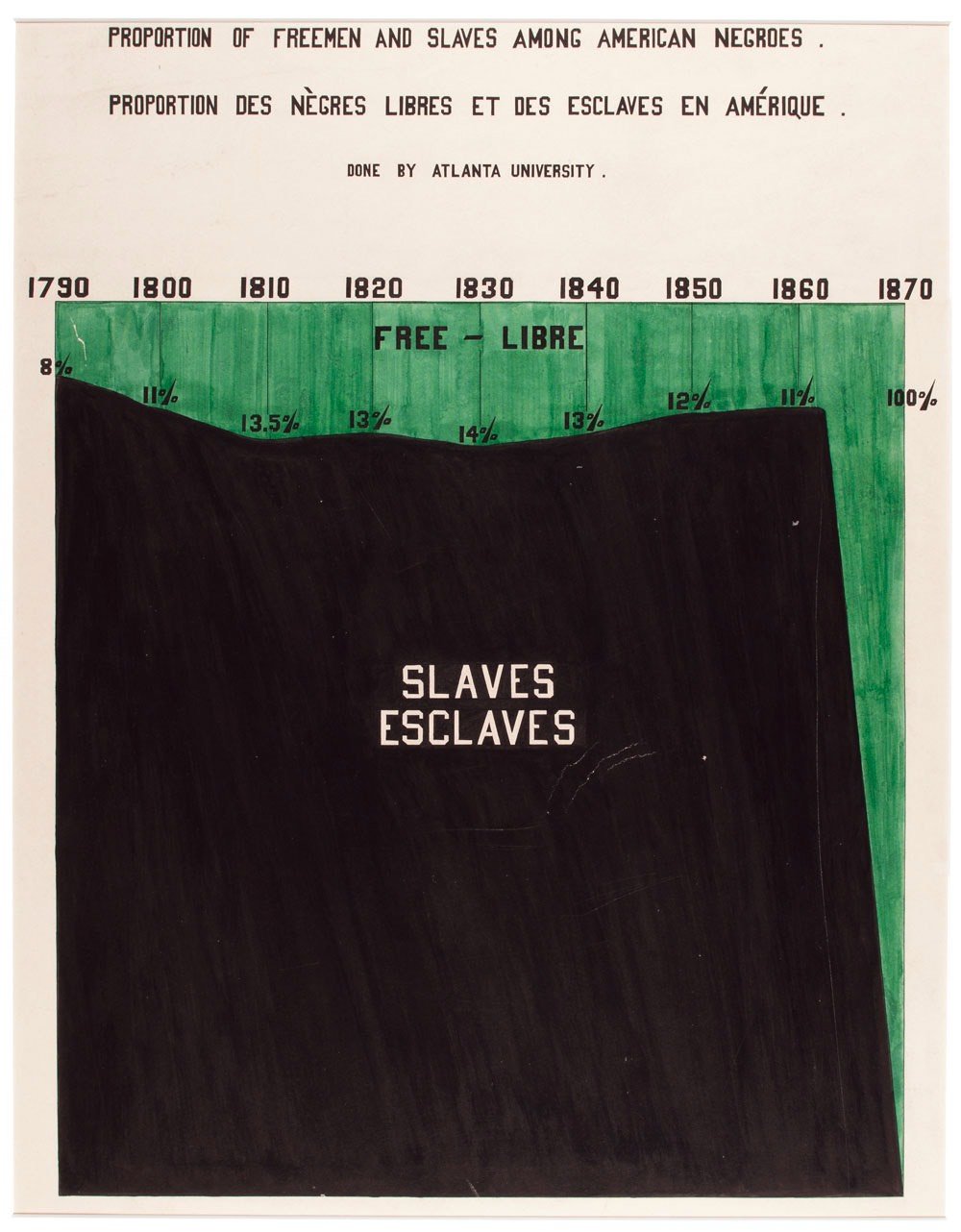
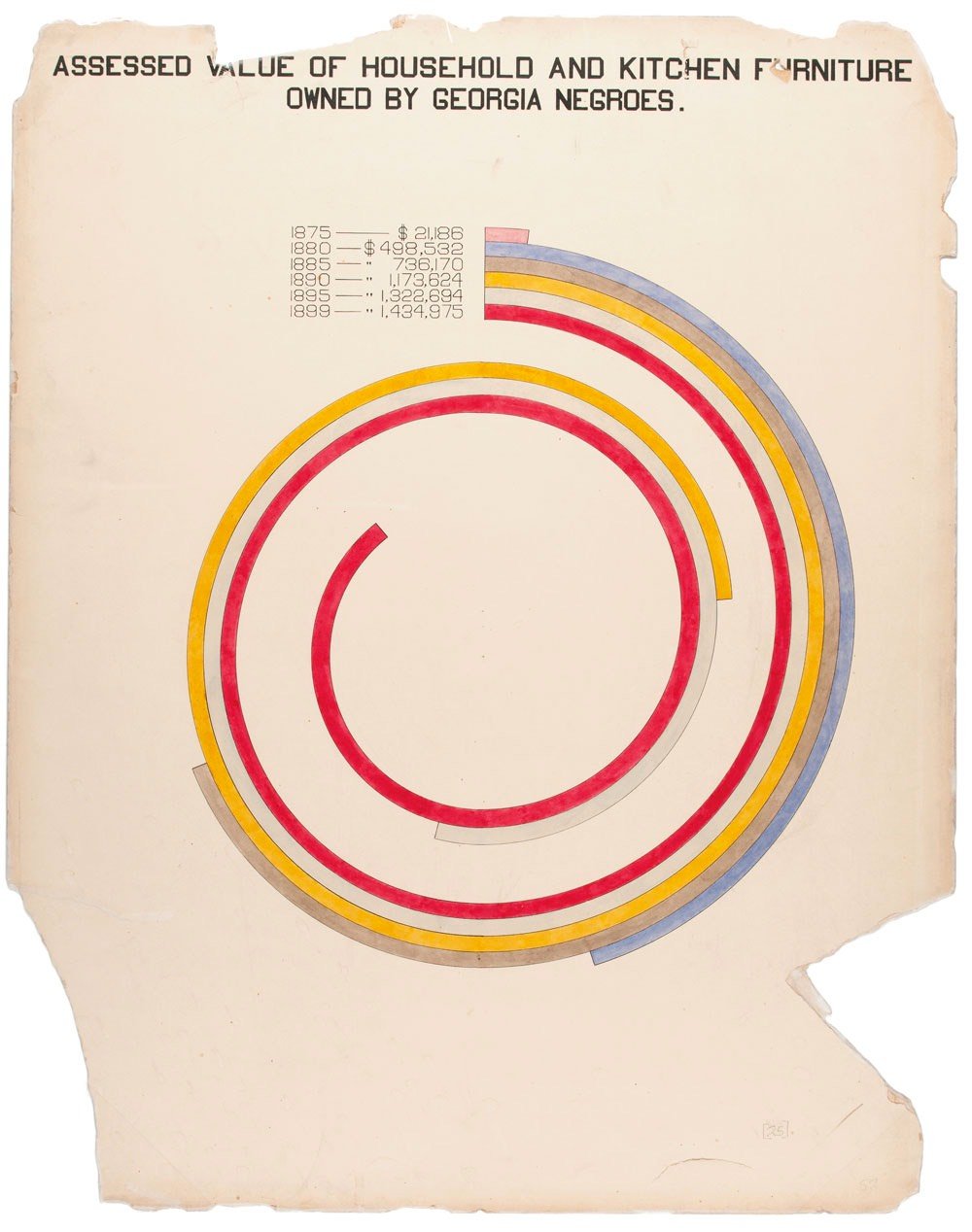
The colorful charts, graphs, and maps presented at the 1900 Paris Exposition by famed sociologist and black rights activist W. E. B. Du Bois offered a view into the lives of black Americans, conveying a literal and figurative representation of “the color line.” From advances in education to the lingering effects of slavery, these prophetic infographics — beautiful in design and powerful in content — make visible a wide spectrum of black experience.
W. E. B. Du Bois’s Data Portraits collects the complete set of graphics in full color for the first time, making their insights and innovations available to a contemporary imagination. As Maria Popova wrote, these data portraits shaped how “Du Bois himself thought about sociology, informing the ideas with which he set the world ablaze three years later in The Souls of Black Folk.”
Celebrity Then & Now
Ard Gelinck photoshops celebrities posing with their younger selves and posts the results on Instagram.
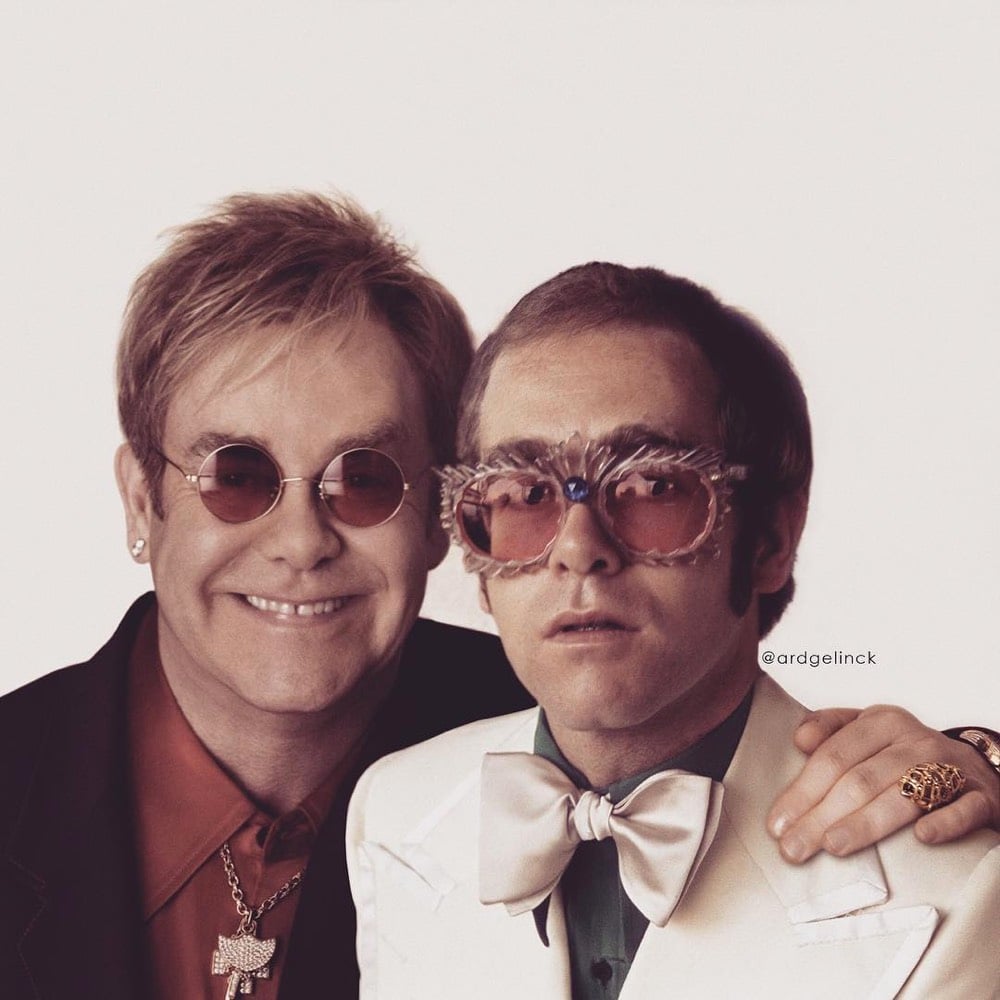



John Dingell served in Congress longer than anyone. Here’s his advice about preserving American democracy. One of his suggestions is “Abolish the Senate”.
The Hoover Dam’s “Hidden” 26,000-Year Astronomical Monument
There’s a little-known monument located at the site of the Hoover Dam that shows the progression of “North Stars” as the Earth moves through its 25,772-year change of rotational axis. Alexander Rose of the Long Now Foundation couldn’t find much public documentation related to this celestial map, so he did some research.
I now had some historical text and photos, but I was still missing a complete diagram of the plaza that would allow me to really understand it. I contacted the historian again, and she obtained permission from her superiors to release the actual building plans. I suspect that they generally don’t like to release technical plans of the dam for security reasons, but it seems they deemed my request a low security risk as the monument is not part of the structure of the dam. The historian sent me a tube full of large blueprints and a CD of the same prints already scanned. With this in hand I was finally able to re-construct the technical intent of the plaza and how it works.
In order to understand how the plaza marks the date of the dam’s construction in the nearly 26,000-year cycle of the earth’s precession, it is worth explaining what exactly axial precession is. In the simplest terms, it is the earth “wobbling” on its tilted axis like a gyroscope — but very, very slowly. This wobbling effectively moves what we see as the center point that stars appear to revolve around each evening.
Presently, this center point lies very close to the conveniently bright star Polaris. The reason we have historically paid so much attention to this celestial center, or North Star, is because it is the star that stays put all through the course of the night. Having this one fixed point in the sky is the foundation of all celestial navigation.
Here are some explanatory notes that Rose wrote over the blueprints of the monument showing how to read the map:

Update: Wally Motloch has also done some significant research on this monument.
Fast food French fries ranked. Five Guys & McDonald’s top the list. Am I the only one who really likes the Shake Shack fries?
The Water Dancer, a Forthcoming Novel by Ta-Nehisi Coates
Having thoroughly conquered the world of nonfiction, Ta-Nehisi Coates now has his sights set on fiction. His first novel, The Water Dancer, is due out in September. Here’s the cover and a synopsis:
Young Hiram Walker was born into bondage — and lost his mother and all memory of her when he was a child — but he is also gifted with a mysterious power. Hiram almost drowns when he crashes a carriage into a river, but is saved from the depths by a force he doesn’t understand, a blue light that lifts him up and lands him a mile away. This strange brush with death forces a new urgency on Hiram’s private rebellion. Spurred on by his improvised plantation family, Thena, his chosen mother, a woman of few words and many secrets, and Sophia, a young woman fighting her own war even as she and Hiram fall in love, he becomes determined to escape the only home he’s ever known.
The NY Times has a bit more info here about the book.
Use of technology by different Amish affiliations. Cars & TV are always verboten, tractors are rarely used, but washing machines, lamps, and chainsaws see wide usage.
Fan Ho’s Street Photography of 50s & 60s Hong Kong


When he was a teenager, Fan Ho grabbed his father’s camera and started documenting street scenes in Hong Kong. From there, he built up a documentary body of work that puts him among the great practitioners of street photography.
Dubbed the “Cartier-Bresson of the East”, Fan Ho patiently waited for ‘the decisive moment’; very often a collision of the unexpected, framed against a very clever composed background of geometrical construction, patterns and texture. He often created drama and atmosphere with backlit effects or through the combination of smoke and light. His favorite locations were the streets, alleys and markets around dusk or life on the sea.
What made his work so intensely human is his love for the common Hong Kong people: Coolies, vendors, hawkers selling fruits and vegetables, kids playing in the street or doing their homework, people crossing the street… He never intended to create a historic record of the city’s buildings and monuments; rather he aimed to capture the soul of Hong Kong, the hardship and resilience of its citizens.
Before his death a few years ago, Ho selected some images from his archives that have become the basis of a new show at the Blue Lotus Gallery.
The photographic selection expressed in this new body of work feels more natural, indeed closer to documentary and pure street photography compared to his previously highly stylised approach. In his own manifesto ‘Thoughts on Street Photography’ which he wrote at the age of 28, and of which carefully selected quotes can be found throughout the book, he explains, “my realistic street photos are rarely selected. Pictorial aesthetics and images with a sense of humour are still the key for salon photos but I expect changes to happen soon. In the meantime, I will just keep trying.”
(via moss & fog)
Remember When Ted Danson Wore Blackface to Roast Whoopi Goldberg? Reader, I did not. Wow.
Lego Prosthetic Arms
19-year-old bioengineering major David Aguilar, aka Hand Solo, has built himself a series of prosthetic arms out of Lego. In this short video, he shows off some of the arms, including his latest 4th generation model:
He built his first Lego prosthetic limb when he was 18. According to this Reuters article, Aguilar names his arms using the same system as Iron Man uses for his armor suits (MK-1, MK-II, etc.) and wants to build low-cost prosthetics after he graduates from college.
In 1961, Fannie Lou Hamer was sterilized without her consent in a procedure dubbed a “Mississippi appendectomy”. The goal was to reduce the black population in the state.
The Evidence Mounts: Uber/Lyft Are Bad for Our Cities
At Streetsblog, Angie Schmitt has compiled a handy list of all the ways in which ride sharing services like Uber and Lyft are having significant negative effects on our cities, the environment, and our health.
Uber and Lyft are just crushing transit service in the U.S. A recent study estimated, for example, they had reduced bus ridership in San Francisco, for example, 12 percent since 2010 — or about 1.7 percent annually. And each year the services are offered, the effect grows, researcher Gregory Erhardt found.
Every person lured from a bus or a train into a Lyft or Uber adds congestion to the streets and emissions to the air. Even in cities that have made tremendous investments in transit — like Seattle which is investing another $50 billion in light rail — Uber and Lyft ridership recently surpassed light rail ridership.
Transit agencies simply cannot complete with private chauffeur service which is subsidized at below real costs by venture capitalists.
Uber and Lyft (and their investors) clearly aren’t going to stop…it’s up to cities and communities to take action. They can’t just let these companies ruin their transit until ride sharing is the only thing left.
Midi City 2000, an interactive art experiment where midi songs become cityscapes. “Each row of buildings is an instrument in the song; each building is a note: the position is the time, the height is the pitch.”
On the Health Benefits of Sleep
In this piece for The Guardian, Matthew Walker says that sleeping well is the best thing you can do for your health. Here are just a couple of examples:
Routinely sleeping less than six hours a night also compromises your immune system, significantly increasing your risk of cancer. So much so, that recently the World Health Organization classified any form of night-time shiftwork as a probable carcinogen.
Inadequate sleep — even moderate reductions of two to three hours for just one week — disrupts blood sugar levels so profoundly that you would be classified as pre-diabetic. Short sleeping increases the likelihood of your coronary arteries becoming blocked and brittle, setting you on a path towards cardiovascular disease, stroke and congestive heart failure.
A lack of sleep may also increase your chances of developing Alzheimer’s disease, decrease your athletic performance, make it more difficult to control your appetite, and have mental health consequences. Walker, who is the director of UC Berkeley’s Center for Human Sleep Science and author of Why We Sleep: Unlocking the Power of Sleep and Dreams, says we should change our cultural attitudes towards sleep.
I believe it is therefore time for us, as individuals and as nations, to reclaim our right to a full night of sleep, without embarrassment or the terrible stigma of laziness. I fully understand that this prescription of which I write requires a shift in our cultural, professional, and global appreciation of sleep.
In my media diet roundup post for 2018, I said that getting adequate sleep has “transformed my life” and that sleep is “even lower-hanging self-help fruit than yoga or meditation”. I have not been sleeping well for the past several weeks and it’s taking a toll: I’ve been sluggish, eating poorly & erratically, feeling down, and not anywhere near my peak mental performance. This morning I woke up at 4am, couldn’t really get back to sleep, and I feel like I’m running at 60% capacity, 65% tops.
Paper Mario Bros
I love the aesthetic of Paper Mario Bros, a hand-drawn stop motion animation of World 1-1 of Super Mario Bros. The artist, @KisaragiHutae6, drew the world in their notebook and shared some behind-the-scenes techniques on Twitter…how they crumpled the paper for stomped-on Goombas, etc.

(via digg)
A Gesture-Controlled Touchscreen Calculator Watch from 1984
In 1984, Casio released their AT-552 Janus watch, which had a feature that seems years ahead of its time to these modern eyes: a calculator that worked by drawing numbers and arithmetic operators right on the screen. Check out this demo:
As the video notes, this touchscreen tech didn’t take off back in the 80s because it was quite unreliable.
BBC Earth Announces Five New Nature Documentaries, Including “Planet Earth III”
The team at BBC Earth have announced that they’re working on five new nature documentary series set to air in the next few years, including Planet Earth III and One Planet: Seven Worlds, narrated by David Attenborough. Here’s a teaser trailer:
Fantastic news…Planet Earth II and Blue Planet II are two of the best documentaries I’ve seen in recent years. There’s more information about the new shows in these two BBC press release.
Perfect Planet will be a unique fusion of blue chip natural history and earth sciences explaining how the living planet operates. This five part series will show how the forces of nature — weather, ocean currents, solar energy and volcanoes — drive, shape and support Earth’s great diversity of life. It will broadcast in 2020.
Frozen Planet II will take audiences back to the wildernesses of the Arctic and Antarctica. Ten years on from the original Frozen Planet, this series tells the complete story of the entire frozen quarter of our planet that’s locked in ice and blanketed in snow. It will broadcast in 2021.
Planet Earth III will be the most ambitious natural history landmark ever undertaken by the BBC. Combining the awe and wonder of the original Planet Earth, the new science and discoveries of Blue Planet II and Planet Earth II, and the immersive character-led storytelling of Dynasties, the series will take the Planet Earth experience to new heights. It will broadcast in 2022.
One Planet: Seven Worlds, airing sometime later this year, will consist of seven episodes, one for each of the world’s seven continents.
Millions of years ago incredible forces ripped apart the Earth’s crust creating seven extraordinary continents. This series will reveal how each distinct continent has shaped the unique animal life found there.
We will discover why Australasia is full of peculiar and venomous wildlife; why North America is a land of opportunity where pioneers succeed; and what the consequences are for life racing to compete on the richest of all continents, South America.
Attenborough is narrating this series but it’s not clear whether he’ll be doing the same for Frozen Planet II or Planet Earth III. For one thing, the man is 92 years old and for another, Netflix is luring the BBC’s talent with promises of bigger budgets and wider reach.
A Flyover of Europa
Using recently processed data from the Galileo probe, NASA-JPL software engineer Kevin Gill created this low-altitude flyover of Europa, one of Jupiter’s moons.
The surface was imaged between 1996 & 1998 and is made up of a water-ice crust. Despite the cracks and streaks that you can see in the video, Europa actually has the smoothest surface of any object in the solar system.
These images are not super high-res because they were taken with equipment designed and built in the 80s. But we’re going to get a better look at Europa soon…both ESA’s JUICE probe and NASA’s Europa Clipper are planning on imaging the moon in the next decade.
“Fortnite has become a daily social square – a digital mall or virtual afterschool meetup that spans neighborhoods, cities, countries and continents.” By unbundling gaming, it’s bundling everything else:
Me Cookie Monster. Ask Me Anything.
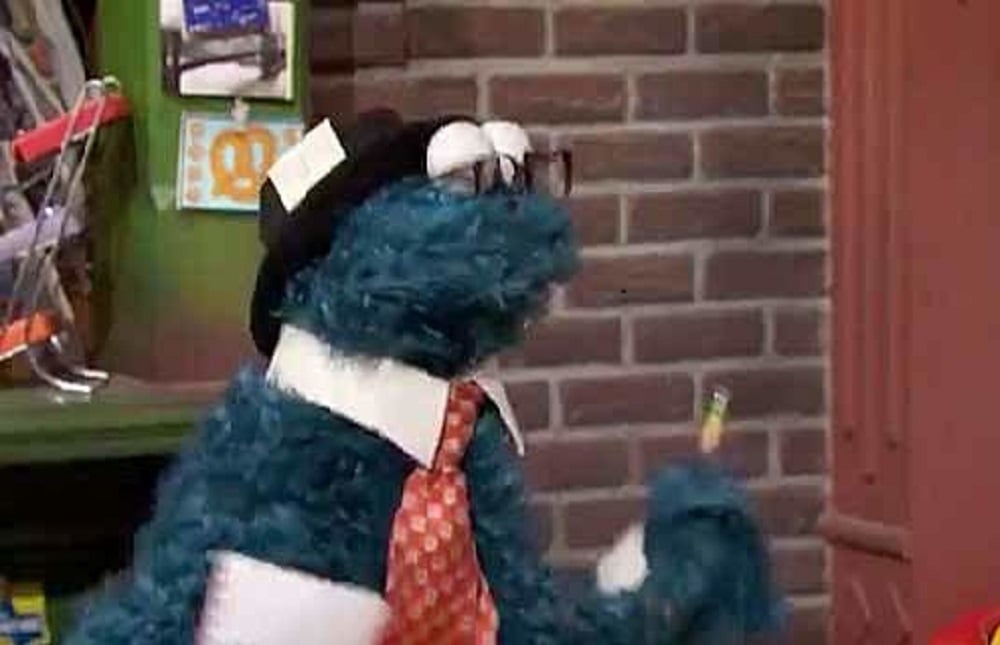
We’ve established that I’m a huge fan of Cookie Monster, the most orally challenged but also the most literarily adept muppet. But even with those cards on the table, this Reddit AMA is something special.
Q: Is there anything you won’t eat? I mean, I’ve seen you eat a typewriter before…
A: Me stay away from anything in Oscar’s trashcan. Otherwise me not picky.
Q: My 7-year-old daughter is about to start selling cookies for Girl Scouts. Do you have any advice for her?
A: Don’t eat the product!
Q: There’s been a lot of famous people who have come to visit you and your friends on Sesame Street! Did any of those guests give you a cookie?
A: Me friends have surprised me with lots of cookies! Sir Ian Mckellan even gave me two cookies!
Q: Who would you most like to sing a “C is for Cookie” duet with?
A: Me would love to sing duet with Lady Gaga. Me and me friends are monsters after all. Me hope she see dis!
Q: What is the optimum number of chocolate chips per cookie?
A: Me always say the more the merrier. Me think me need at least 3.14 chocolate chippies per nom nom. MMM pi
Q: If you could only eat one type of cookie for the rest of your life, what would it be?
A: Wow! Me didn’t realize these question be so hard. If me had to choose just one cookie, me would have to pick me Mommy’s classic chocolate chippie!
Q: We know cookies are your favourite food. What is your second favourite food?
A: Can me say more cookies…?
A2: Me thought it over. Definitely “more cookies.”
Q: My son is your biggest fan in the world. His name is Nico and he’s almost 2. Any words of advice for him???
A: Me think it important to always share your cookies. Me know it hard to do sometimes, but it da kind thing to do.
A2: Oh, and HI NICO! Me love you!
Q: What was it like working with Jim Henson?
A: Me never sure what he did, but he always around to lend a hand and give me cookie!
Q: How’s the rent on Sesame Street?
A: Me think you confused…. Rent played on different street, me think Broadway?
It goes on and on like this. Maybe I’m too much of a softie (probably underbaked… god, it’s contagious), but I love this.
Remembering J Dilla On His 45th Birthday

On his 32nd birthday, February 7, 2006, J Dilla (born James Dewitt Yancey, in Detroit, MI) released an unusual instrumental album called Donuts. Three days later, he was dead, from complications of lupus. Since then, February 7 has become an especially important day for fans of Dilla and Donuts, and this year (which would have been his 45th birthday) was no different.
His local alt-weekly, the Metro Times, gathered a collection of memories from other top producers and collaborators, including Q-Tip, DJ Jazzy Jeff, and T3 from Slum Village, the underground hip-hop group to which Dilla belonged for years.
At High Snobiety, Danny Schwartz published a lengthy tribute to and analysis of Dilla’s contributions to musical history:
J Dilla operated within the rich tradition of sampling, and like many other hip-hop producers, he used the MPC to layer jazz, soul, fusion, and other styles of music on top of breakbeats. What distinguished Dilla from everyone else was his holistic approach that imbued his massive production catalogue with a dynamic range of sounds and textures. His most important innovation was that he turned off the ‘quantize’ feature of the MPC, so that his kicks and hats might arrive significantly before or after the beat. To put it another way, he loosened his beats from their rhythmic bedrock; they were not rigid, but gambled forward with a woozy lilt. One could easily argue that Dilla and Lex Luger influenced the rhythmic sensibilities of pop music more than anyone else since funk drummers like James Brown’s Clyde Stubblefield. Dilla was a perfectionist, and his rhythmic idiosyncrasies, however off-grid, were perfectly calibrated; like Gandalf, he arrived precisely when he meant to.
An MPC is a sampling machine. A little over a year ago, Vox put together a nice little video specifically about Dilla’s idiosyncratic, influential use of his MPC3000:
A 2006 feature in The Fader has memories from everyone from Madlib to Erykah Badu, but Dilla’s mother Maureen Yancey (affectionately known as “Ma Dukes”) talks specifically about Donuts, probably Dilla’s most famous album (although you’re sure to start a fight if you call it or any other of his albums his “best”):
I knew he was working on a series of beat CDs before he came to Los Angeles. Donuts was a special project that he hadn’t named yet. This was the tail end of his “Dill Withers” phase, while he was living in Clinton Township, Michigan. You see, musically he went into different phases. He’d start on a project, go back, go buy more records and then go back to working on the project again. I saw it because I was at his house every day, all day. I would go there for breakfast, go back to Detroit to check on the daycare business I was running, and then back to his house for lunch and dinner. He was on a special diet and he was a funny eater anyway. He had to take 15 different medications, we would split them up between meals, and every other day we would binge on a brownie sundae from Big Boys. That was his treat.
I didn’t know about the actual album Donuts until I came to Los Angeles to stay indefinitely. I got a glimpse of the music during one of the hospital stays, around his 31st birthday, when [friend and producer] House Shoes came out from Detroit to visit him. I would sneak in and listen to the work in progress while he was in dialysis. He got furious when he found out I was listening to his music! He didn’t want me to listen to anything until it was a finished product. He was working in the hospital. He tried to go over each beat and make sure that it was something different and make sure that there was nothing that he wanted to change. “Lightworks,” oh yes, that was something! That’s one of the special ones. It was so different. It blended classical music (way out there classical), commercial and underground at the same time.
At okayplayer, Elijah C. Watson focused on Dilla’s influence on contemporary hip-hop artists, especially the emerging subgenre of lo-fi hip-hop:
Also called “chill-hop,” “jazzy hip-hop,” or the more specific “lo-fi hip-hop radio for studying, relaxing, and gaming,” lo-fi hip-hop has become a subgenre and subculture. It’s a subgenre featuring instrumentals rooted in the melancholy melodies of jazz and boom-bap drums of golden age hip-hop.
Playlists dedicated to lo-fi hip-hop can be found on music streaming services but YouTube serves as its primary base (with a looped image of an anime scene often being featured.) Channels like Chillhop Music, ChilledCow, and Private ChillOut offer 24/7 streams of the subgenre — the subscriber count anywhere from 102,000 to 2,500,000. Through these channels, the aesthetic of lo-fi hip-hop is best experienced. Fans from across the world listen to the tracks and engage with each other in real time, all while a looped image of an animated character writing or working on a laptop is featured.
At Ambrosia For Heads, Dan Charnas discusses his research for his forthcoming academic book, DillaTime: How a Hip-Hop Producer Reinvented Rhythm and Changed the Way Musicians Play:
[J Dilla’s] story gets complicated first as he encounters some of the pains of the business and then, later, illness. The thing he most wants to do becomes harder and harder for him to do. But that laser focus, as his friends and family have painstakingly documented, remains until his final hour. Talk about triumph and pain mixed together. One of the things I’ve grappled with since the day I walked into his basement in 1999 is why people have such an overwhelming emotional connection to this person and his work. And one of the answers I’ve come to is that, in every piece of music, we can somehow sense that overwhelming will and spirit…
My co-author, Jeff Peretz, and I took about 20 students to Detroit in 2017 as a part of my Dilla course at the Clive Davis Institute… The Detroit experience was a real eye-opener for our students. Context and environments are crucial to understanding. I’ll tell you one of the things that always strikes me about the D: everyone in Detroit always seems to be building something. Dilla’s ‘Uncle Herm’ isn’t just a chef and baker—he gutted and built the donut shop with his own two hands.
Hanif Abdurraqib contributed this unforgettable anecdote
I say it every year, but few things about Dilla stick with me more than the story of his mother massaging his swollen hands so that he could finish working on Donuts while he was approaching death. pic.twitter.com/66wRyAH9Lh
— Hanif Abdurraqib (@NifMuhammad) February 7, 2019
We miss you, Jay. You should still be here.
In the late 1920s, Mikhail Sholokhov’s novel Quiet Don became a sensation in the new Soviet Russia. Then Joseph Stalin became Sholokhov’s number one fan… and life got complicated.
Skipping Stones: “Every Throw Is a Complete New Puzzle”
In this video, Wired’s Robbie Gonzalez talks to world record stone skipper Kurt Steiner, who achieved 88 skips with a stone in 2013. Steiner shares some of his techniques with Gonzalez and quickly gets him throwing better.
This video might be totally uninteresting to everyone reading this, but I just had to post it. I love skipping rocks. Ever since I was a little kid, it’s been one of my favorite things to do whenever I’m at a lake or quiet river. I may or may not have a stack of stones appropriate for skipping on the shelf next to my spare change jar. My personal record is somewhere in the mid-to-upper 20s…this throw was in that ballpark. After watching Steiner throw, I’m excited to get out in the spring and try hitting the water a little closer (and harder) than I normally do.
Buy the Cheap Thing First

Beth Skwarecki has written the perfect Lifehacker post with the perfect headline (so perfect I had to use it for my aggregation headline too, which I try to never do):
When you’re new to a sport, you don’t yet know what specialized features you will really care about. You probably don’t know whether you’ll stick with your new endeavor long enough to make an expensive purchase worth it. And when you’re a beginner, it’s not like beginner level equipment is going to hold you back…
How cheap is too cheap?
Find out what is totally useless, and never worth your time. Garage sale ice skates with ankles that are so soft they flop over? Pass them up.
What do most people do when starting out?
If you’re getting into powerlifting and you don’t have a belt and shoes, you can still lift with no belt and no shoes, or with the old pair of Chucks that you may already have in your closet. Ask people about what they wore when they were starting out, and it’s often one of those options…
What’s your exit plan?
How will you decide when you’re done with your beginner equipment? Some things will wear out: Running shoes will feel flat and deflated. Some things may still be usable, but you’ll discover their limitations. Ask experienced people what the fancier gear can do that yours can’t, and you’ll get a sense of when to upgrade. (You may also be able to sell still-good gear to another beginner to recoup some of your costs.)
Wearing out your beginner gear is like graduating. You know that you’ve stuck with the sport long enough that you aren’t truly a beginner anymore. You may have managed to save up some cash for the next step. And you can buy the nicer gear now, knowing exactly what you want and need.
This is 100 percent the truth, and applies to way more than just sports equipment. Computers, cooking, fashion, cars, furniture, you name it. The key thing is to pick your spots, figure out where you actually know what you want and what you want to do with it, and optimize for those. Everywhere else? Don’t outwit yourself. Play it like the beginner that you are. And save some scratch in the process. Perfect, perfect advice.
Mad Men but with All the Cigarettes Replaced by Kazoos
Cignature Films is showing the first episode of Mad Men in its entirety but with all of the cigarettes replaced with kazoos. Here’s a short clip (watch the whole thing here):
Though smoking in movies was a staple element of old Hollywood, the Center for Disease Control and Prevention found that tobacco has had a resurgence in recent years on the big screen. It has been reported that 44% of adolescents who start smoking do so because of smoking images they have seen in the movies. Cignature Films wants to change this statistic for the better.
They also have plans to do the same with Fight Club, The Godfather, and Stranger Things. I’m wondering how long this is gonna stay up though…a clip or two is perhaps covered under fair use but I can’t see studios allowing entire movies and episodes to be shown without some kind of legal action. (via rob walker)
Three Chords and the Truth: Where Did Punk Music Come From?
Punk music seems like one of those things that sprang, fully-formed, out of nowhere. But in this video, Trash Theory traces the roots of punk back to the birth of rock and roll, from Link Wray and The Phantom in 1958 to Louie Louie by The Kingsmen & Surfing Bird by The Trashmen to the more familiar precursors like Velvet Underground, The Stooges, and even Led Zeppelin.
Few genres have had the lasting impact of punk. 1976 is one of those seismic dividing lines in popular music. A history destroying year zero. The point after which everything changed. It was the year that The Ramones debut was released, the year that the first singles from the UK Punk scene were set loose upon a unprepared public. And while the punks wanted to remove themselves from the past, burn all that had come before, nothing happens within a vacuum. These bands didn’t appear out of nowhere with the key principles of the genre locked in place. This innovative minimalist, three-chords and the truth, turbo-powered music had to have precedent. There were other artists that lead up to this era-defining moment in music that are either forgotten, ignored or not given credit. This is how Punk became punk.
I was particularly interested to learn about Death, a Detroit band that the NY Times called “Punk Before Punk Was Punk”:
Forgotten except by the most fervent punk rock record collectors - the band’s self-released 1976 single recently traded hands for the equivalent of $800 - Death would likely have remained lost in obscurity if not for the discovery last year of a 1974 demo tape in Bobby Sr.’s attic.
Released last month by Drag City Records as “… For the Whole World to See,” Death’s newly unearthed recordings reveal a remarkable missing link between the high-energy hard rock of Detroit bands like the Stooges and MC5 from the late 1960s and early ’70s and the high-velocity assault of punk from its breakthrough years of 1976 and ‘77. Death’s songs “Politicians in My Eyes,” “Keep On Knocking” and “Freakin Out” are scorching blasts of feral ur-punk, making the brothers unwitting artistic kin to their punk-pioneer contemporaries the Ramones, in New York; Rocket From the Tombs, in Cleveland; and the Saints, in Brisbane, Australia. They also preceded Bad Brains, the most celebrated African-American punk band, by almost five years.
Jack White of the White Stripes, who was raised in Detroit, said in an e-mail message: “The first time the stereo played ‘Politicians in My Eyes,’ I couldn’t believe what I was hearing. When I was told the history of the band and what year they recorded this music, it just didn’t make sense. Ahead of punk, and ahead of their time.”
You can hear that demo tape on Spotify and elsewhere. There isn’t a playlist to accompany this video but this proto punk Spotify playlist (Apple Music verison) contains several of the songs mentioned.
(via open culture)
One Breath Around the World
I’ve followed the work of world champion free diver Guillaume Néry for several years now and this video might be his best one yet. In it, he explores a bunch of different waterscapes, floating and diving and walking until you can’t tell which way is up and if he’s actually in water or in outer space.
Also of note is that the video was filmed by free diver Julie Gautier, who shot the entire thing while holding her breath, a more difficult task than Néry’s. I’d like to see the making-of video for that!
Pro tip: remind yourself to breathe while you’re watching this. I found myself unconsciously holding my breath, on and off, almost the entire time. (via swissmiss)
Watch a Single Cell Become a Complex Organism in Just Six Minutes
In this time lapse filmed by Jan van IJken, the embryo of a salamander is shown transforming into a hatched tadpole, from a single cell to a complex organism in a three-week process that’s condensed into just six minutes of video.
The first stages of embryonic development are roughly the same for all animals, including humans. In the film, we can observe a universal process which normally is invisible: the very beginning of an animal’s life. A single cell is transformed into a complete, complex living organism with a beating heart and running bloodstream.
Confessions of a Letterhead Collector
Design historian Steven Heller collects vintage letterheads and shares some examples at Design Observer.
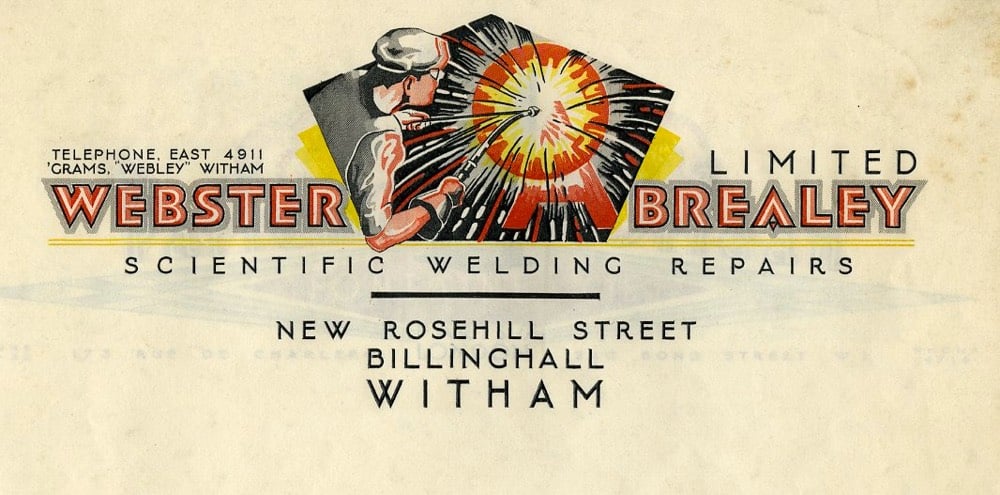

The design of blogs owes much to the letterhead (and, perhaps more obviously, to the newspaper masthead). Blog posts are, after all, public letters “to whom it may concern”. The first design I did for Gawker was quite letterheady and I loved & envied my pal Dean Allen’s letterhead-inspired design for Cardigan Industries.
Update: Loooots more great letterhead examples at Letterheady. (thx, jenni)
“The Dirty Secret of El Chapo’s Downfall”. Sounds like he got to be more trouble than he was worth and his smarter & more careful partners pushed him out and into custody.
The Colonization of the Americas Cooled the Earth
A new paper from researchers at University College London argues that the genocide of indigenous peoples in the Americans after Columbus’s landing in 1492 had a significant effect on the Earth’s global climate and was a major cause of the Little Ice Age, the dip in global temperatures from the 16th to the 19th centuries. They estimate that 55 million indigenous people died during Europe’s conquest of the Americas (~90% of the population), and the 56 million hectares of land that they had cleared of vegetation (roughly the area of Kenya) was then reclaimed by forests, which then took in more carbon dioxide, reduced the greenhouse effect, and caused the Earth to cool. From the paper’s conclusion:
We calculate that this led to an additional 7.4 Pg C being removed from the atmosphere and stored on the land surface in the 1500s. This was a change from the 1400s of 9.9 Pg C (5 ppm CO2). Including feedback processes this contributed between 47% and 67% of the 15-22 Pg C (7-10 ppm CO2) decline in atmospheric CO2 between 1520 CE and 1610 CE seen in Antarctic ice core records. These changes show that the Great Dying of the Indigenous Peoples of the Americas is necessary for a parsimonious explanation of the anomalous decrease in atmospheric CO2 at that time and the resulting decline in global surface air temperatures.

The authors also assert that this effect of human action on global climate marks the beginning of the Anthropocene epoch.
I first heard about this theory from Charles Mann’s excellent 1493, which led me to William Ruddiman’s 2003 paper. I heard about this most recent study from Mann too… he called it “most careful study of the impacts of Euro conquest of Americas I’ve yet seen”.
If you’re not up for reading the paper itself, you can check out the coverage from the BBC, the Guardian, Nature, or the NY Times.
This Is Every Generically Cool Restaurant’s Playlist. “If there’s a small plate on the menu, this is what’s on the speakers.”
“Freedom River”, an Animated Parable about the Erosion of Freedom
In 1971, director Sam Weiss released this short animated parable narrated by Orson Welles.
Concentrating on an area of growing concern in our society — the indifference that makes people blind to the injustices around them — this animated parable traces how the erosion of freedom, like the pollution of natural resources, can occur so gradually that both evade the attention of a busy and preoccupied nation.
Produced back in the era of the Vietnam War and the Nixon administration, the lessons of this film still resonate today. (via open culture)
The Forgotten Father of Pizza in the USA
A recent series of discoveries have upended the widely accepted story of the history of pizza in America and have the NYC food world in a tizzy. The typical origin story of American pizza is this:
In 1905, Gennaro Lombardi applied to the New York City government for the first license to make and sell pizza in this country, at his grocery store on Spring Street in what was then a thriving Italian-American neighborhood.
But research by Peter Regas (who looked in Italian-language newspapers from the late 19th century) has revealed a previously unknown pizza kingpin behind some of the NYC’s first pizzerias and moves the probable introduction date of the pizza back into the 1800s.
Of this forgotten older generation, one baker stands out. Filippo Milone came to New York in the late 19th century and likely established two of the most famous New York pizzerias that still exist today, Lombardi’s on Spring Street and John’s of Bleecker Street.
Regas explains, “Filippo Milone likely established pizzerias in at least six locations throughout New York City. Of these locations, three later became famous under different names: ‘Pop’s,’ ‘John’s,’ and ‘Lombardi’s.’ Pop’s in Brooklyn closed decades ago, but the other two in Manhattan still exist. Milone, a pioneer in what has become a $45 billion industry, later died in 1924, without children to preserve his story buried in an unmarked grave in Queens.”
Wow! This 1903 advertisement is for a pizzeria of Milone’s on Grand St.:

As for Lombardi’s founding in 1905, Regas has the receipts for that too:
While proof of that license has never materialized, Regas has tracked down Gennaro Lombardi’s birth record, naturalization papers, and other supporting documents that tell a different story. Gennaro Lombardi first came to America in November of 1904 at age 17, classified as a “laborer”. If he became involved with the pizzeria at 53 1/2 Spring Street in 1905, it was as an employee not as an owner. By that time, it had already been established as a pizzeria probably by Milone in 1898 but certainly by another proprietor named Giovanni Santillo who followed Milone in 1901.
This is as if some other dude we’ve never heard of wrote both the Declaration of Independence and the Federalist Papers and then handed them over to Adams Franklin Jefferson Madison Hamilton etc.
Regas is documenting his research here on an eventual book about all of this, due out sometime later this year. Boy oh boy, they’re gonna have to reprint a lot of NYC pizzeria menus with incorrect origin stories in them… (via @adamkuban)
Can’t Unsee, a quiz that shows you pairs of interface designs and asks you to pick the one that’s “most correct”. IMO, some of the “right” answers are pretty subjective.
If you have over 1000 photos and don’t subscribe to Flickr Pro, today is likely the last day to back up your Flickr photos. Here’s how to do it.
How To: Absurd Scientific Advice for Common Real-World Problems
Randall Munroe, proprietor of the excellent XKCD and author of What If? and Thing Explainer, is coming out with a new book in a few months called How To: Absurd Scientific Advice for Common Real-World Problems.
Bestselling author and cartoonist Randall Munroe explains how to predict the weather by analyzing the pixels of your Facebook photos. He teaches you how to tell if you’re a baby boomer or a 90’s kid by measuring the radioactivity of your teeth. He offers tips for taking a selfie with a telescope, crossing a river by boiling it, and getting to your appointments on time by destroying the Moon. And if you want to get rid of the book once you’re done with it, he walks you through your options for proper disposal, including dissolving it in the ocean, converting it to a vapor, using tectonic plates to subduct it into the Earth’s mantle, or launching it into the Sun.
Instant pre-order.
The Atlas of Endangered Alphabets

The Atlas of Endangered Alphabets is a collection of “indigenous and minority writing systems”, gathered together in the hopes of collecting information about reviving interest in these alphabets. From the about page:
In 2009, when I started work on the first series of carvings that became the Endangered Alphabets Project, times were dark for indigenous and minority cultures. The lightning spread of television and the Internet were driving a kind of cultural imperialism into every corner of the world. Everyone had a screen or wanted a screen, and the English language and the Latin alphabet (or one of the half-dozen other major writing systems) were on every screen and every keyboard. Every other culture was left with a bleak choice: learn the mainstream script or type a series of meaningless tofu squares.
Yet 2019 is a remarkable time in the history of writing systems. In spite of creeping globalization, political oppression, and economic inequalities, minority cultures are starting to revive interest in their traditional scripts. Across the world, calligraphy is turning writing into art; letters are turning up as earrings, words as pendants, proverbs as clothing designs. Individuals, groups, organizations and even governments are showing interest in preserving and protecting traditional writing systems or even creating new ones as way to take back their cultural identity.
You can access the alphabets from a map on the front page or alphabetically here. The project is also looking for information on a number of possible scripts that may or not be still in use.
The image above is an example of the Yi alphabet, a script created during the Tang dynasty in China (618-907 AD).
Lessons from the Brilliant Screenplay for Groundhog Day
Using screenwriter Danny Rubin’s book How To Write Groundhog Day as a guide, Lessons from the Screenplay examines how the protagonist in the Bill Murray comedy classic is forced by his circumstances to undergo the hero’s journey and emerging at the end having changed. This passage from Rubin’s book sets the stage:
The conversation I was having with myself about immortality was naturally rephrased in my mind as a movie idea: “Okay, there’s this guy that lives forever…” Movie stories are by nature about change, and if I were to test the change of this character against an infinity of time, I’d want him to begin as somebody who seemed unable to change.
We’ve all seen movies where the change the protagonist undergoes does not seem earned and it makes the whole movie seem phony and hollow. One of the things that makes Groundhog Day so great is that a person who starts out genuinely horrible at the beginning transforms into a really good person by the end and the audience completely buys it. At any point along the way, the story could very easily jump off the rails of credulity, but it never does. A nearly perfect little movie.
Illustrator Anthony Hare has been drawing Alfred Hitchcock for almost 20 years. Here’s a retrospective he posted to Instagram.
Cybersecurity Tips and Beauty Product Reviews, Together at Last
In her series “opsec and beauty”, artist Addie Wagenknecht efficiently combines two YouTube genres into one, giving tips on cybersecurity while reviewing beauty products. In this video, Wagenknecht recommends using pass phrases instead of passwords while reviewing a Korean facial sheet mask:
I also like this one, titled “Dry shampoo review Herbal Essence and blocking Chad from calling”:
It makes your hair smell really good. It kinda makes you look like you’ve washed it. I’m going on like day 10 right now of not washing my hair but you can tell it’s transformed. I also want to talk about having secondary phone numbers because that way you can block the guy once he realizes you actually have to do things to yourself to be perfect.
(Gimme Some of That) Ol’ Atonal Music
Merle Hazard bills himself as “America’s foremost country singer/economist”. In this delightful performance, he sings about his daddy, who was a composer of atonal music along the same lines as Arnold Schoenberg and Alban Berg.
It is a genuinely catchy tune and the part where Alison Brown comes in atonally on the banjo killed me. This might be my new favorite country song?
In the past, Hazard has done songs about the Fiscal Cliff and Inflation or Deflation. You might remember his recent country tune about self-driving trucks. (via @tedgioia)
Purl, an Animated Short from Pixar
Purl, directed by Kristen Lester, is an animated short from Pixar about a ball of yarn that starts a new job at B.R.O. Capital and quickly feels out of place among all the men in suits. The story was inspired by Lester’s experience working in animation as the only woman at her company.
In order to do the thing that I loved, I sort of became one of the guys. And then I came to Pixar and I started to work on teams with women for the first time. And that actually made me realize how much of the female aspect of myself I had buried and left behind.
(via @cabel)
A lack of natural resources, radiation, and low gravity will make it very hard to establish a human base on Mars. So why do we want to do this?
Peculiar Pyongyang, a 4K Time Lapse Video of the North Korean Capital
Time lapse video tours of big cities are a common sight on YouTube — see this Dubai hyperlapse or this Paris time lapse — and the technique has become an aesthetic of its own. But seeing the super-stylized & ultra-HD practice applied to a place like Pyongyang, North Korea broke my brain a little bit. The video was shot by Joerg Daiber, who writes of the experience:
Pyongyang is by far the weirdest and strangest place I have ever been to. At the same time it’s also one of the the most interesting and intriguing places and unlike anywere else I have ever been to. You go there with 100 questions and you return with 1000!
(via @kbandersen)
Threadstories

For the past few years, visual artist Threadstories has been making these amazing masks and posting selfies of her wearing them on Instagram. She starts each mask with a crocheted balaclava:

And ends up at many different endpoints:


You can see the masks in motion in this video and read more about the project in this RedMilk interview.
I don’t have any one line of enquiry or source of inspiration. Everything from traditional basket making to Francis Bacons portraits to the sight of someone with really crooked teeth or an episode of Blue Planet might inspire a mask. Thematically I am questioning how the erosion of personal privacy online effects how we view and portray ourselves. I am constructing facades — masks in response to these questions. We are all so over exposed and to what end? Privacy is precious.
(via swissmiss)
Pamela Paul: Let Children Get Bored Again. “It’s especially important that kids get bored — and be allowed to stay bored — when they’re young.”
On the Ethics of Refugee Camps
At the World Economic Forum held in Switzerland at the end of January, Mohammed Hassan Mohamud, a refugee in Kenya for the past 20 years, spoke about the unethical practice of keeping people in long-term refugee camps, what he calls “putting people in faraway places and pretending that they don’t exist”.
It surprises me that money and capital moves around the world in second, but it takes a refugee decades, or in the case of my mother, she never had the chance to get out, waiting for 25 years for a place to go, a place to call home.
We talk about ethical and sustainable development. We talk about how we can be ethical with robots and machines. We want to solve death. And there’s so much human suffering. We haven’t figured out life yet.
How to hang a picture using a fork. Is this the best-ever household hack?
More on Ancient Scripts and the History of Writing
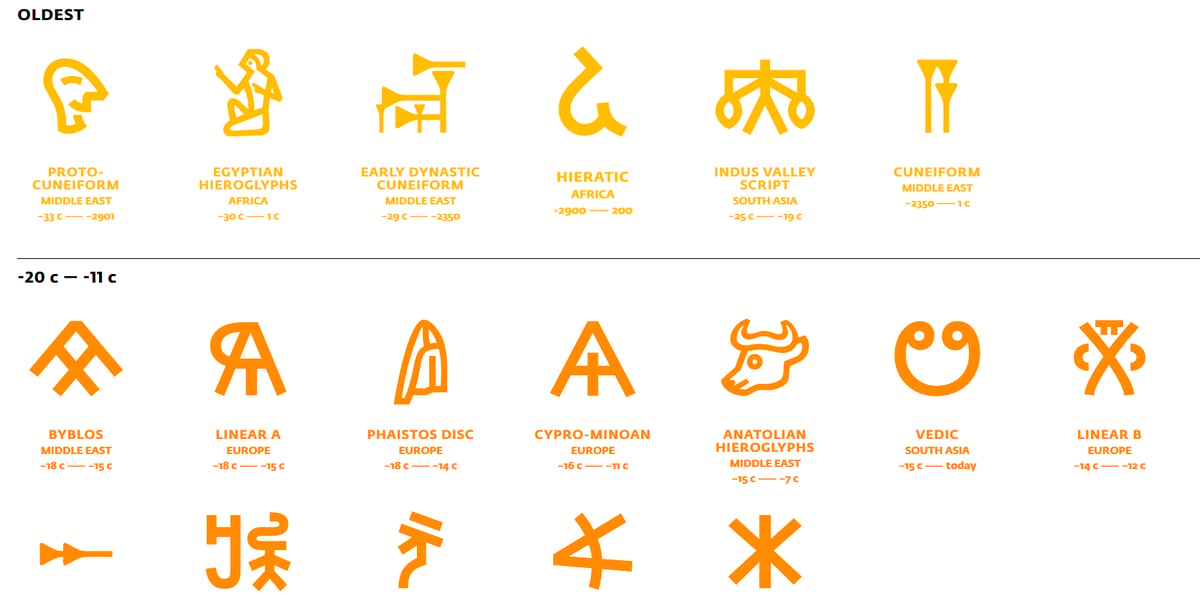
One post last week that y’all loved was The Evolution of the Alphabet. I loved it too; anything breaking down the history of writing in ways that are (get it) decipherable is just
First, a riff on Jason’s post from the man himself, Talking Points Memo’s Josh Marshall. Josh, like me, is obsessed with the history of writing. He recommends two books (Empires of the Word: A Language History of the World by Nicholas Oster and The Writing Revolution: Cuneiform to the Internet by Amalia E. Gnanadesikan) and adds this reflection:
Historians of writing believe that our current alphabet originated as a sort of quick-and-dirty adaptation of Egyptian hieroglyphics into a simpler and more flexible way of writing. You take a small number of hieroglyphic characters representing specific things, decide to use them not for their meaning but for their sound and then use this as a way to encode the sound of words in almost any language. In this particular case it was to encode a Semitic language related to and ancestral to Hebrew and Phoenician. It was likely devised by soldiers of traders operating either in Egypt or between Egypt and what’s now Israel and Jordan.
This basic A B C D formulation is the foundation of the writing systems for not only all languages that use the Latin alphabet but also those which use the Greek, Cyrillic and Arabic alphabets along with numerous others. What is particularly fascinating is that most historians of writing believe that this invention - the alphabet, designed by and for sub-literate Semites living on the borderlands of Egypt about 4,000 years ago - is likely the origin point of all modern alphabets. In some cases, it’s a direct lineal descent as in Canaanite to Greek to Latin to our modern alphabet. But the creators of the alphabets that now dominate South Asia (originating 2500 to 3000 years ago) also seem to have borrowed at least the idea of the alphabet from these Semitic innovators, though others believe they are an indigenous creation.
The deep history of these letters we are now communicating through is like the DNA - or perhaps rather the record of the DNA - of human cognition and thought, processed through language and encoded into writing.
The second link comes from linguist Gretchen McCulloch. It’s The World Writing Systems, a site that doesn’t focus narrowly on our updated Latin alphabet and its antecedent forms, but on every system of writing that ever is or has been. It lets you search, browse, sort, and generally geek out to your heart’s content. It also lets you know whether the scripts are supported by Unicode (a surprising number are not), and links you to Wikipedia entries about them. So you can easily read about the Cypriot Syllabary, an Iron Age script and descendant of Linear A that was eventually replaced by the Greek alphabet.
Differences between Cypriot syllabary and Linear B The main difference between the two lies not in the structure of the syllabary but the use of the symbols. Final consonants in the Cypriot syllabary are marked by a final, silent e. For example, final consonants, n, s and r are noted by using ne, re and se. Groups of consonants are created using extra vowels. Diphthongs such as ae, au, eu and ei are spelled out completely. In addition, nasal consonants that occur before another consonant are omitted completely.
See, you just learned something!
Now, many of the Aegean writing systems (including Linear A) are still undeciphered. For that, you want classicist Anna P. Judson’s “A very short introduction to the undeciphered Aegean writing systems” from her blog, “It’s All Greek To Me.” (Hat tip here to the polymath sportswriter Zito Madu.)
Here’s what Judson has to say about Linear A (which unlike Linear B, wasn’t used to write Greek, but a related language called Minoan):
It’s generally agreed that at least some Linear A signs, and quite plausibly the majority of them, can be ‘read’, since they are likely to have had similar sound-values to their Linear B equivalents (Linear B was adapted directly from Linear A in order to write in Greek); but it’s still not possible to identify the language involved or to understand any of its grammatical features, the meanings of most words, etc. As an example, the word AB81-02, or KU-RO if transliterated using Linear B sound-values, is one of the few words whose meaning we do know: it appears at the end of lists next to the sum of all the listed numerals, and so clearly means ‘total’. But we still don’t actually know how to pronounce this word, or what part of speech it is, and we can’t identify it with any similar words in any known languages.
The most promising set of inscriptions for analysing linguistic features is the so-called ‘libation formula’ - texts found on stone vases used in religious rituals (‘libation tables’), which are probably dedications (so probably say something like “Person X gives/dedicates/offers this object/offering to Deity Y”), and across which similar elements often recur in the same position in the text. In principle, having a ‘formula’ of this kind should let us identify grammatical elements via the slight variations between texts - e.g. if a particular variation in one word seemed to correlate with the number of dedicators listed, we might be able to infer that that was a verb with singular or plural marking. Unfortunately, there simply aren’t enough examples of these texts to establish this kind of linguistic detail - every analysis conducted so far has identified a different element as being the name of the donor, the name of the deity, the verb of offering, etc., so it’s still not possible to draw any certain conclusions from this ‘formula’.
Cretan Hieroglyphic and its variants are even less well understood than Linear A! Some of them are only attested in single inscriptions! God, writing isn’t a smooth series of adaptations leading to a clear final goal! Writing is a total mess! How did anyone ever make sense of it at all?
But they did; and that’s how and why we’re all here, communicating with each other on these alphanumeric encoding machines to this very day.
A black family business invented Nashville Hot Chicken more than 80 years ago. Now everyone else is getting rich off of it. @williams_paige tells their story:
This essay by @violetblue is great, and puts its finger on a major shift that we should probably be talking about more. “How sex censorship killed the internet we love”
Why James Baldwin Is This Century’s Essential Voice, Too
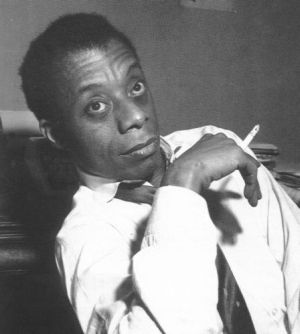
Back in 2015, I wanted to write an essay for The Message (where I was working at the time) about James Baldwin. At that time, it seemed to me, Baldwin was everywhere, but somewhat below the radar; everyone was talking about him, but nobody seemed to notice that everyone was talking about him, or about the things he talked and wrote about. But The Message turned over its writing staff and quickly shut down, and that was the end of that.
Four years later, Baldwin is not below the radar. Baldwin is everywhere, and we know he’s everywhere; we all know we’re talking about him, and if we’re not reading him and citing him, we’re apologizing about it. In short, James Baldwin is finally getting his due as the essential voice not just of the 20th century, but also of the 21st—a bridge not very many thinkers of his generation (or the one before or after) managed to cross.
If Beale Street Could Talk, snubbed at the Oscars for Best Picture (although it is up for Best Adapted Screenplay), is the best film I’ve seen since Children of Men. This magnificent essay by Kinohi Nishikawa focuses on how writer/director Barry Jenkins adapted Baldwin’s book, paying particular attention to Baldwin’s (and Jenkins’s) innovative use of time:
Nearly 45 years later, Jenkins has adapted Beale Street in the spirit of its author’s vision. Most notably, he emphasizes, rather than diminishes, Tish’s point of view. In the film, Tish (KiKi Layne) narrates her romance with Fonny (Stephan James) as if situated in a future point of time. The reflective quality in her voice points to an understanding to come, a bridge between her innocence and her experience….
Restoring Tish’s voice also shows how the novel’s social consciousness is issued from the future, not the past. Jenkins’ aestheticized style, with its dramatic shifts in tone, echoes Baldwin’s shifts in temporal register. A scene of the lovers wooing conjures the magic of rain-drenched streets in classic Hollywood cinema; a later one of Fonny’s confrontation with Officer Bell (Ed Skrein) evokes the grit of movies like Martin Scorsese’s Mean Streets. But in the film’s most powerful scene, Tish watches Fonny take out his anger at Bell by throwing a bag of tomatoes against a wall. The resulting tableau resonates so powerfully because Fonny’s justified rage, and the risk of having it turn on him, feels like it could have happened yesterday.
Baldwin is also the unifying force of a new group exhibition at David Zwirner Gallery, curated by New Yorker critic Hilton Als. Holland Cotter writes openly as “a white kid in the process of working my way through the sociopolitical dynamics of [the 1960s] through reading” Baldwin and other writers.
In 1948, Baldwin left New York for Europe, where he would stay for several years. He returned in the late 1950s to immerse himself in the American civil rights movement. During that time he became a cultural star, a political fixture (within black activism, a controversial one), and one of the grand moral prose rhetoricians.
In the process, Mr. Als suggests, he also disappeared from public view as a knowable, relatable person, someone still wrestling with conflicted ideas about race, sexuality, power, family, and his own creativity (he wanted to make films but never did); someone who could describe himself, in his late 40s, as “an ageing, lonely, sexually dubious, politically outrageous, unspeakably erratic freak.”…
He was skeptical of uplift. As a teenager he left preaching, he said, after he came to see it as just another form of theater. My guess is he sometimes felt the same about the salvational spirit of the early civil rights movement. To the very end, he was negative in his assessment of progress made. “The present social and political apparatus cannot serve the human need,” he wrote bluntly in his final book, “The Evidence of Things Not Seen” (1985). He believed in the positive potential of community, though “in the United States the idea of community scarcely means anything anymore, except among the submerged, the Native American, the Mexican, the Puerto Rican, the Black” — the one hopeful word here being “except.”
“I have had my bitter moments, certainly,” he once said, “but I do not think I can usefully be called a bitter man.” I think he can usefully be called a hero. When I was a kid I felt he was one because of what I took to be his furious moral certainty. Now I look to him for his furious uncertainty. And I still have my copy, time softened with touching, of “Notes of a Native Son,” with him on the cover, his face furrow-browed but dreamy, his gaze fixed somewhere outside camera range.
It’s also useful to explore the ways that Baldwin came up short—usually, moments where he was honest about his own limitations. There are plenty in this nearly two-hour conversation with poet and activist Nikki Giovanni, which is nevertheless worth watching in full:
I don’t know. Baldwin has been such a formative influence on me that it’s hard to remember a time when his writings haven’t been on my mind. As I get older, I become more and more aware of how acute and omnivorous of a cultural critic he was, writing not just about books, but about movies, television, theater, and more. He was clearly one of the most penetrating thinkers about race, sexuality, literature, and their entwining in American culture in our history. I sometimes say that he was maybe the greatest mind the American continent produced, and this is a part of the world that has not gone untouched by genius. He was also a phenomenal stylist; it’s impossible to read him for very long without finding his inflections and rhythms invading your own. And a great storyteller, capable of mixing styles and registers in a way that would have done Shakespeare proud.
If Beale Street Could Talk is in some ways an uneven book, but it’s also where everything that’s great about Baldwin comes together in a single place. You should see it (in the theater, while you can), and you should read it (anytime). There’s a notable set of changes at the end of the movie that make it different from the book, and I’ve been dying to talk to anyone about them for weeks.
Nishikawa also quotes a great line from the book that didn’t make it into the movie: “Whoever discovered America deserved to be dragged home, in chains, to die.” If Beale Street Could Talk was finished on Columbus Day, and Baldwin is picking a fight with Saul Bellow (who modeled his Augie March on Columbus in his own attempt to tell an all-American novel). It is a fight that badly needed to be picked then, and needs to be picked still.
Happiness Spells: A Podcast About Everyday Joys
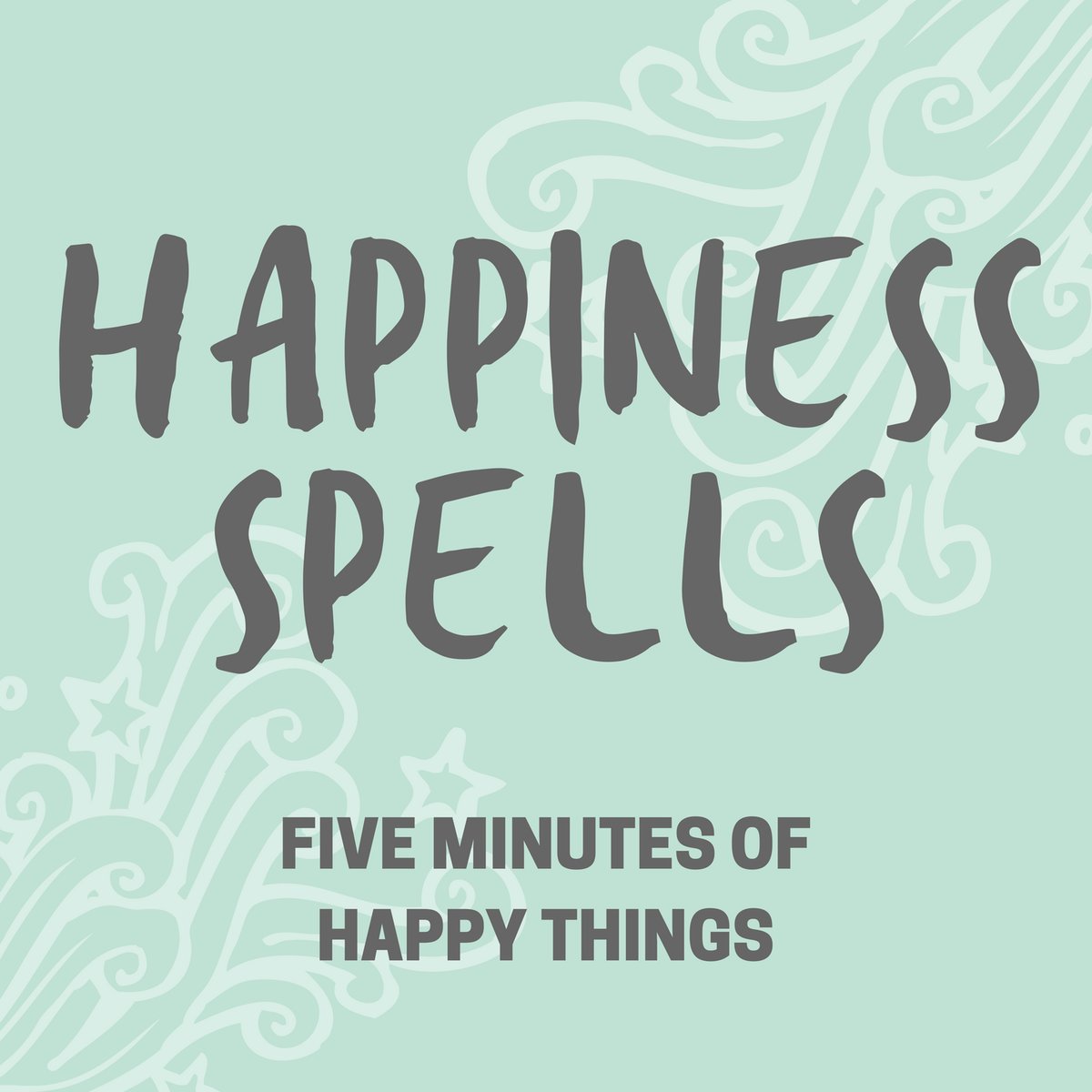
My friend Amanda Meyncke (who’s been a guest on Kottke before, talking about musician Bill Callahan) has a new(ish) podcast, called Happiness Spells. It’s a five-minute podcast that’s delivered twice a week, and it’s just about things that make you happy. From the “About” page:
Happiness Spells is devoted to noticing and celebrating the small pleasures of life.
This life is filled with enjoyable things, and the foundation of all creativity and true joy is in noticing and appreciating all that lies around us and in us.
That’s very Kottke-like! (In fact, Amanda contacted me to note the overlap between her podcast’s raison d’etre and the themes I’ve been exploring at Noticing.)
The experience of listening to the podcast is very meditative. As the narrator (Amanda) tells you at the beginning, it works best with headphones. There’s gentle ambient music playing, and the narrator just reads a list of ordinary, everyday things that make you happy, even if (actually, often) in an oblique way. Like these from the January 31 edition:
- Listening to a little kid tell you a joke that they just learned, even if it doesn’t make much sense.
- People who understand and celebrate your introvert self when you need them to.
- When a friend texts to cancel plans just as you were debating texting them to cancel.
- Coming home to a clean house, clean kitchen, clean floors and rooms.
Ellsworth Kelly US Stamps
The USPS will release a set of stamps in 2019 honoring the artist Ellsworth Kelly. Some art works better on stamps than others…Kelly’s stripped down abstracts look like they were specifically designed for postage:

You can check out more of Kelly’s art at MoMA and The Whitney.




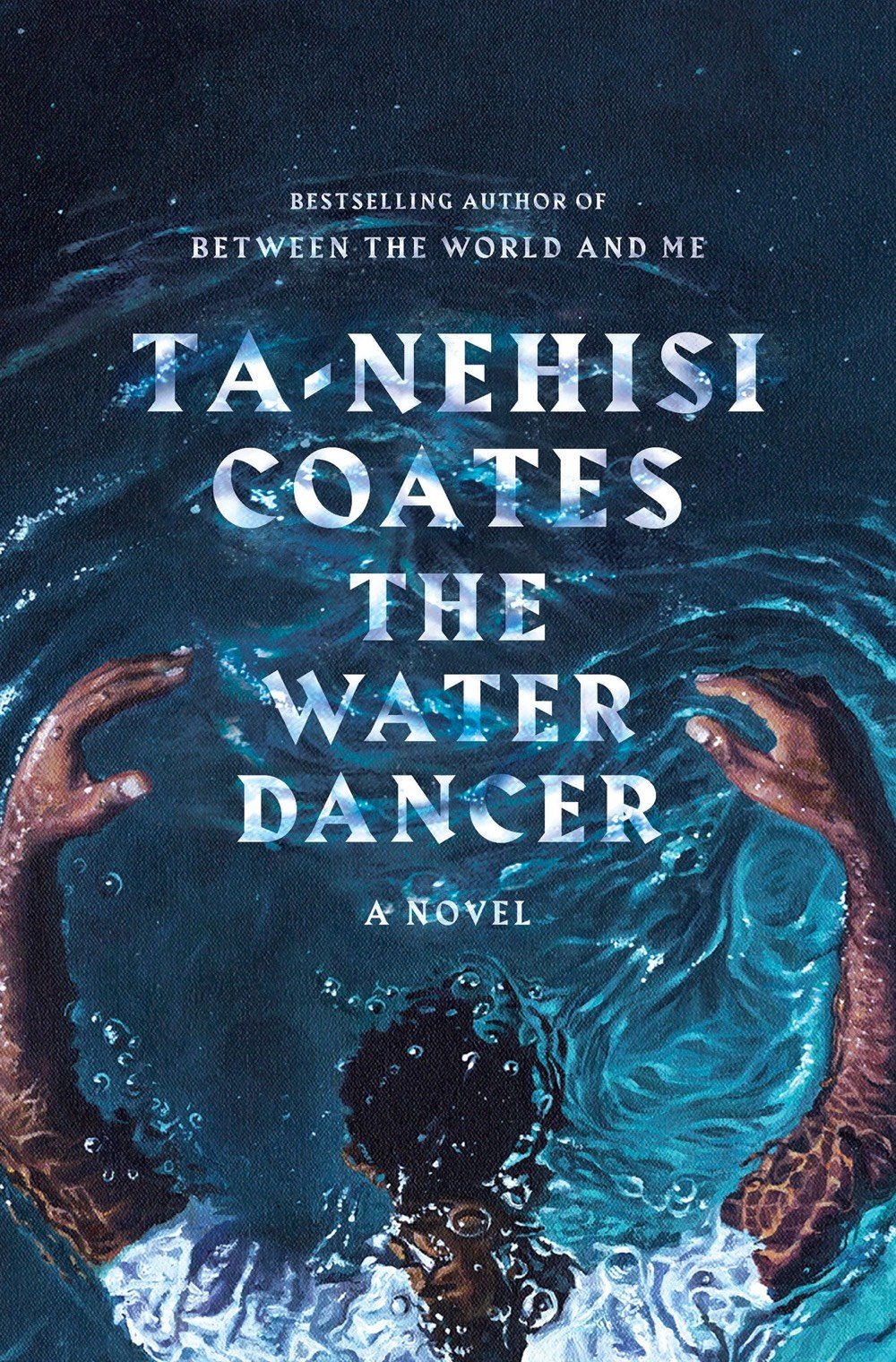
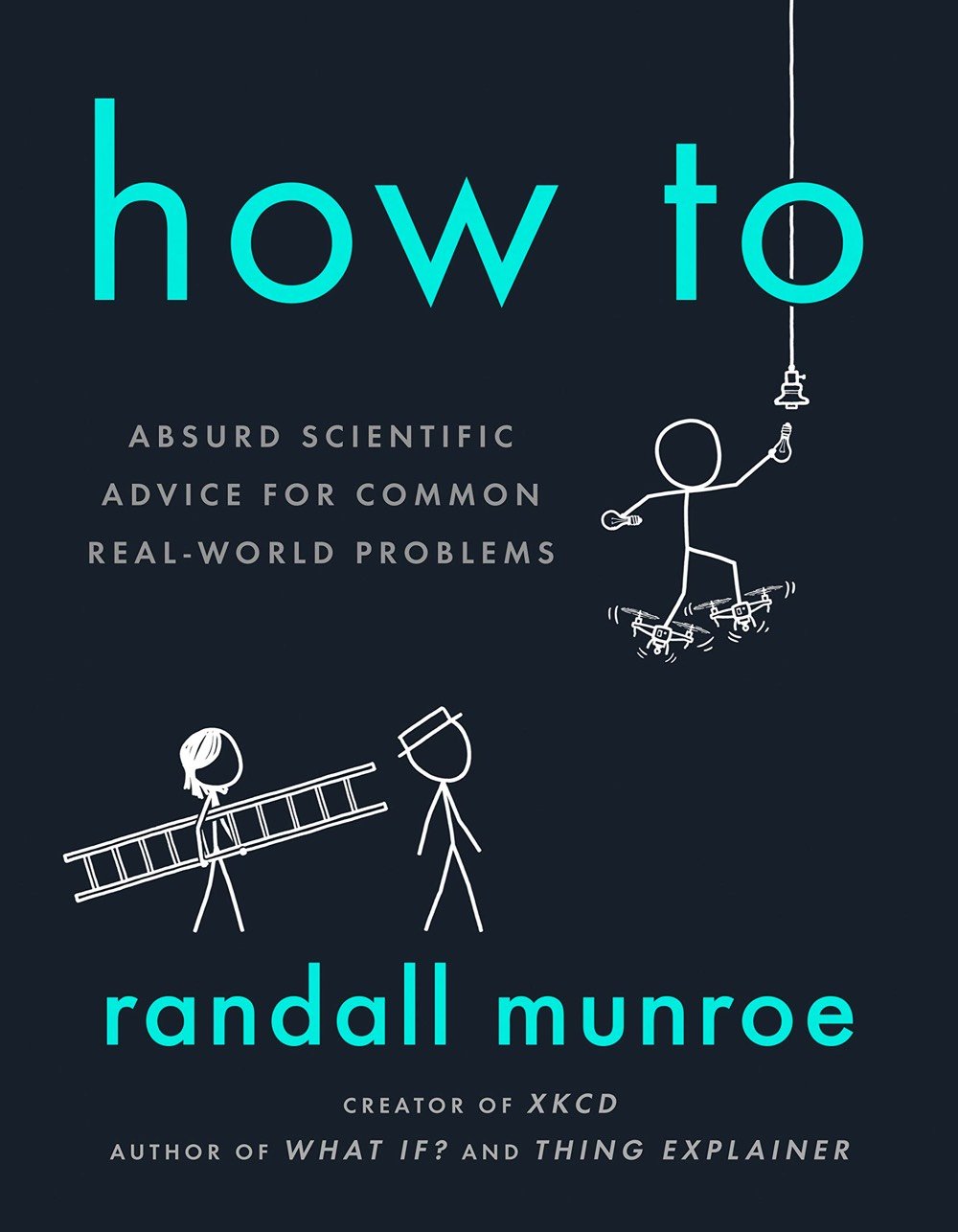
Stay Connected